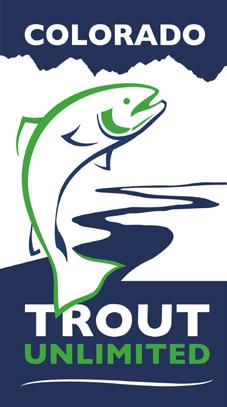


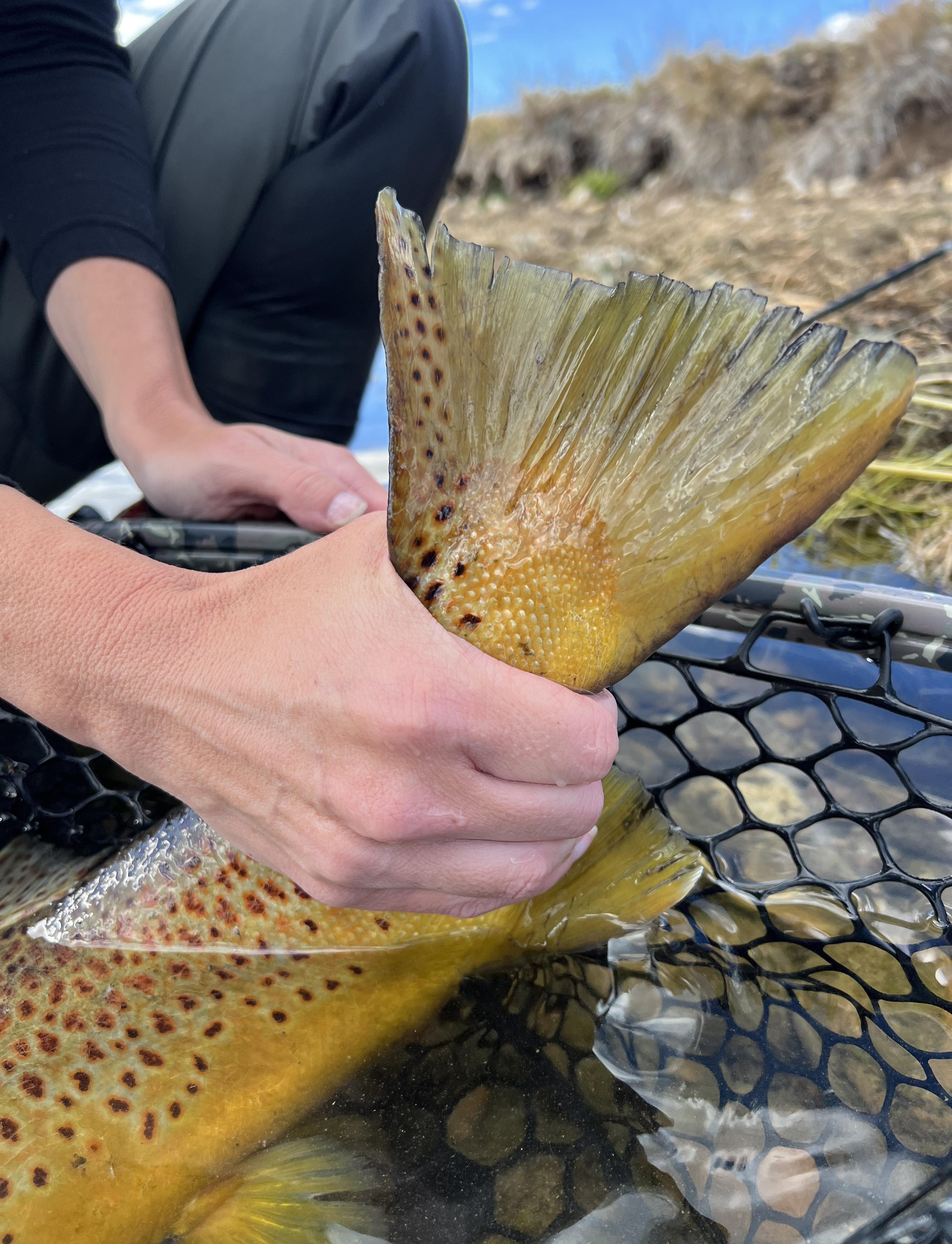
1 spring 2024 Spring 2024 TAILS UP TIPS LANDON MAYER COSTA RICAN JUNGLE TARPON BRIAN LA RUE 2024 RIVER STEWARDSHIP GALA CU FLY FISHING CLUB RESTORING THE KAWUNEECHE VALLEY-

Spend your time fiddling with flies, not with software.
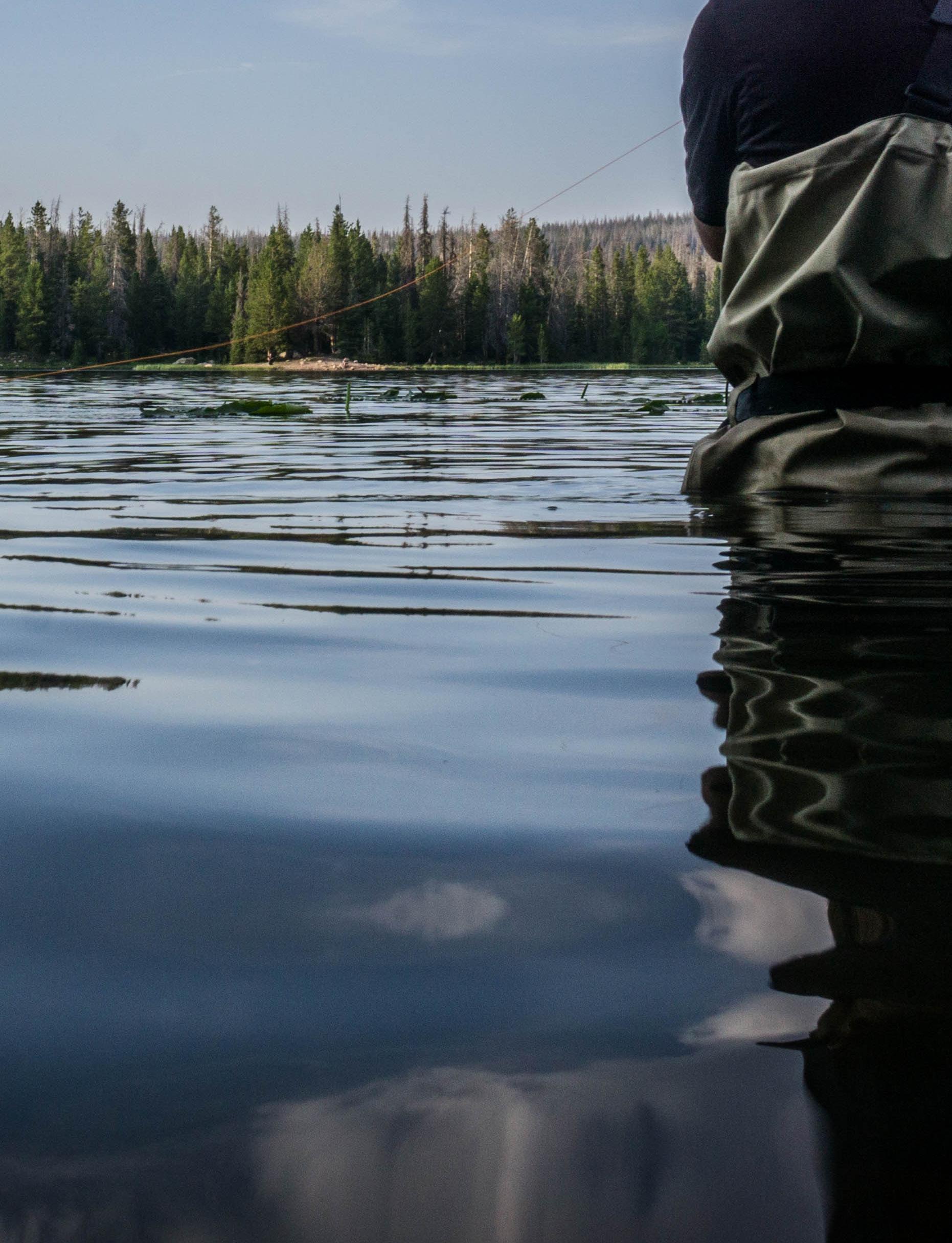
We've been designing High Country Angler for over a decade. reimagine designs (816) 892-0810
david@reimaginedesigns.com
Call or email us for a free estimate for all print and website design.

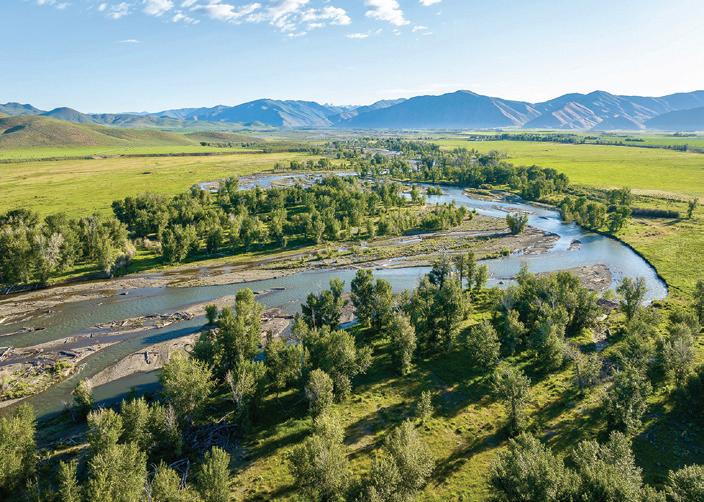
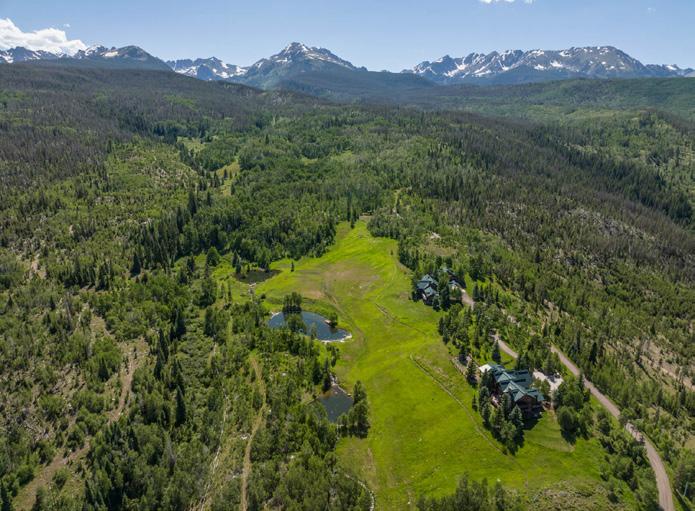
TRIPLE
One of Sun Valley’s landmark holdings encompassing 4,654± deeded acres. Featuring over two miles of river frontage, 1,472± irrigated acres, a 600-head yearround grazing permit, and a full set of improvements.
$28,500,000
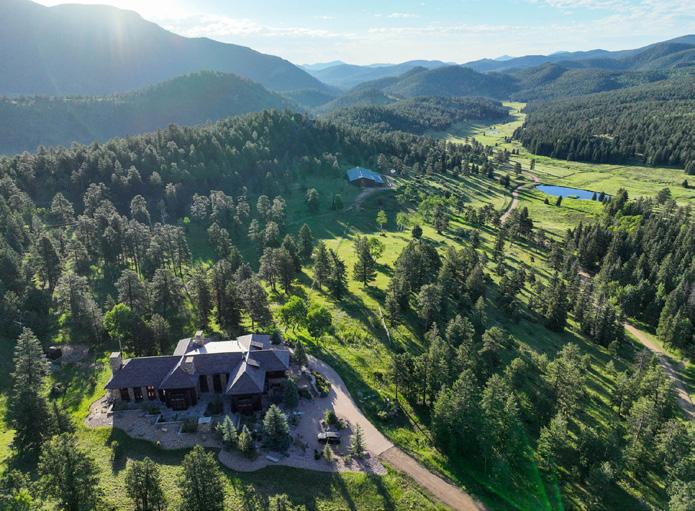
Captains Rock Ranch, located west of Evergreen, is 667± deeded acres, located within the 3,245± acre “shared use” Evans Ranch. Featuring an 11,878± square foot primary residence, indoor arena, and refurbished cabin.
$16,400,000
Minutes from Silverthorne, this 254± acre ranch offers stunning mountain viewsheds, extraordinary lodges, equestrian facilities, and recreational amenities, including trout ponds and three creeks – all bordering national forest.
$26,000,000
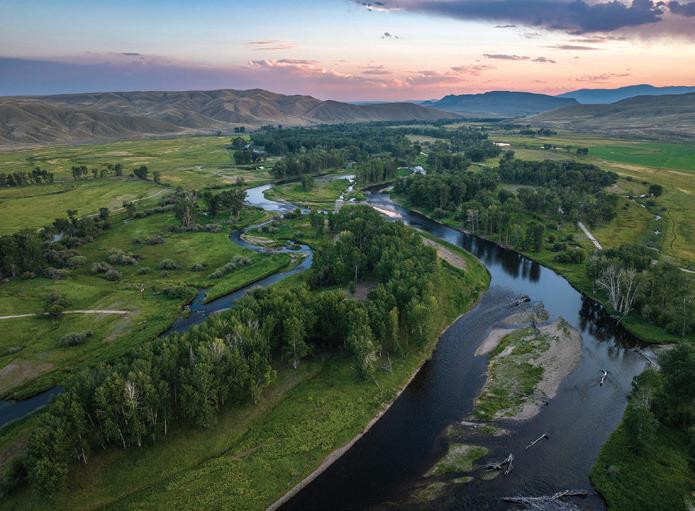
The epitome of a river ranch, with over two-and-one-half miles of Big Hole River frontage framing the western boundary of this 2,211± deeded acre recreational ranch. A tasteful owner’s home completes this unique offering.
14,500,000
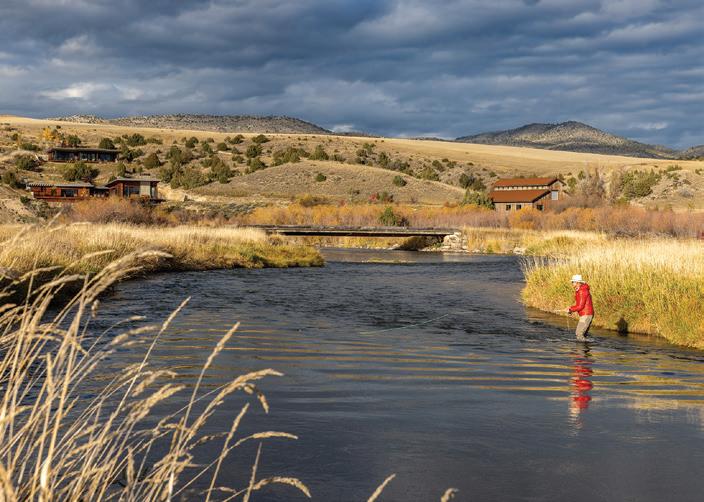
320± acres located 30 minutes from Bozeman with frontage on both East and West Gallatin Rivers. Luxury accommodations include a main lodge and two guest cabins. Offered turn-key inclusive of furnishings and equipment.
$17,750,000
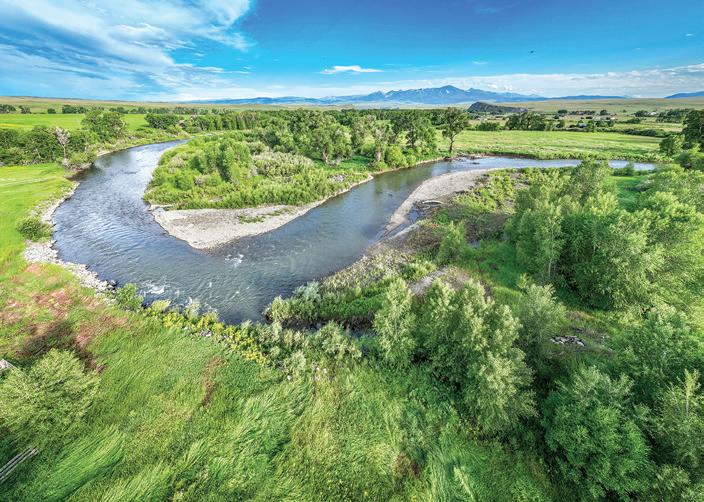
The Angler’s Retreat on the Shields represents a rare find with 39± acres and .75 ± miles of Shields River frontage near Livingston. The beautifully renovated farmhouse and outbuildings create a charming, riparian getaway.
$3,250,000
CAPTAINS ROCK RANCH EVERGREEN, COLORADO
TALON RANCH TWIN BRIDGES, MONTANA
ANGLER’S RETREAT ON THE SHIELDS LIVINGSTON, MONTANA
WOOD RIVER RANCH BELLEVUE, IDAHO
GALLATIN CROSSWATERS ESTATE MANHATTAN, MONTANA
CREEK RANCH SILVERTHORNE, COLORADO
SALES | AUCTIONS | FINANCE | APPRAISALS | MANAGEMENT WWW.HALLANDHALL.COM | INFO@HALLANDHALL.COM | 888.557.3090




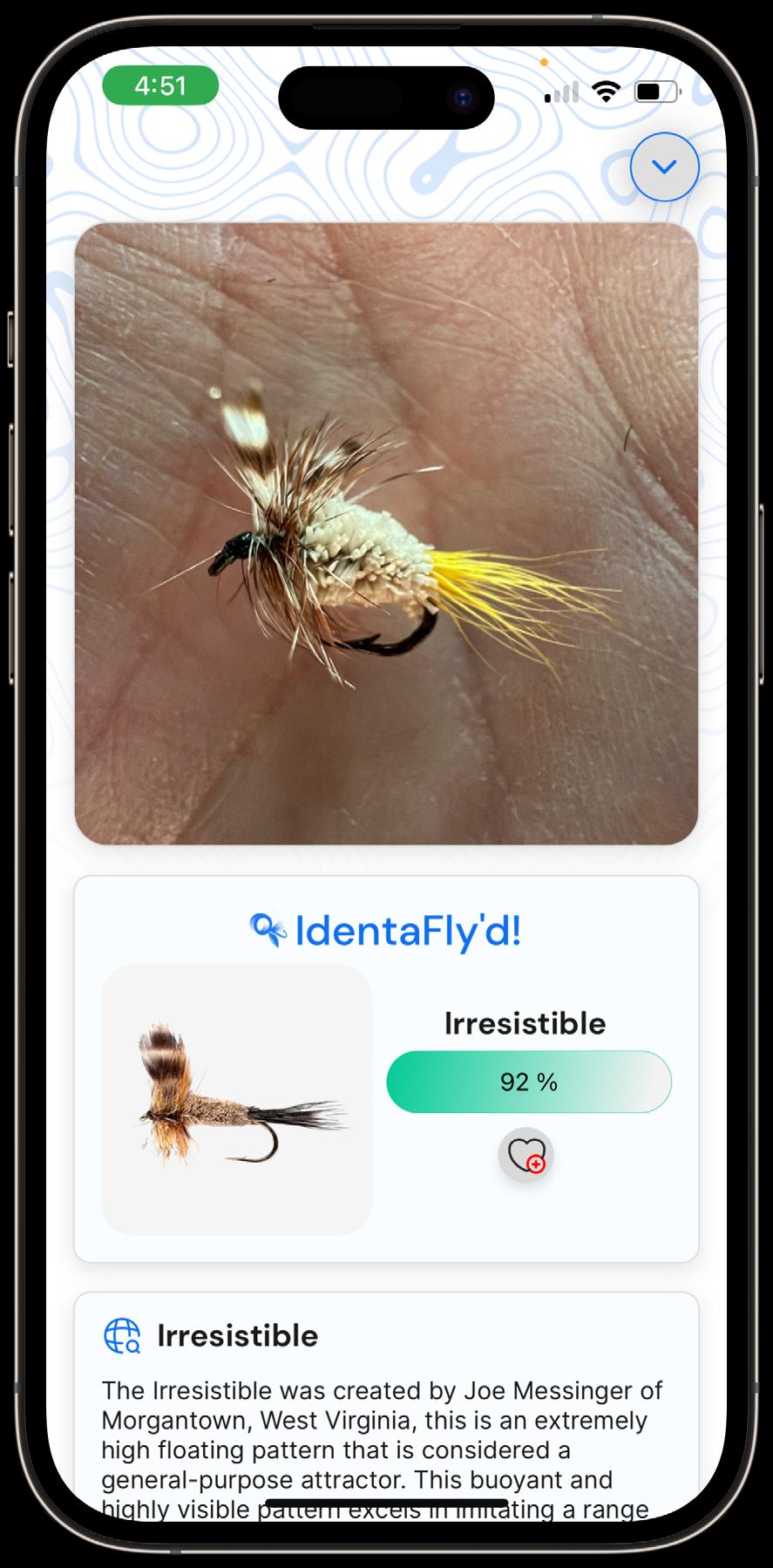


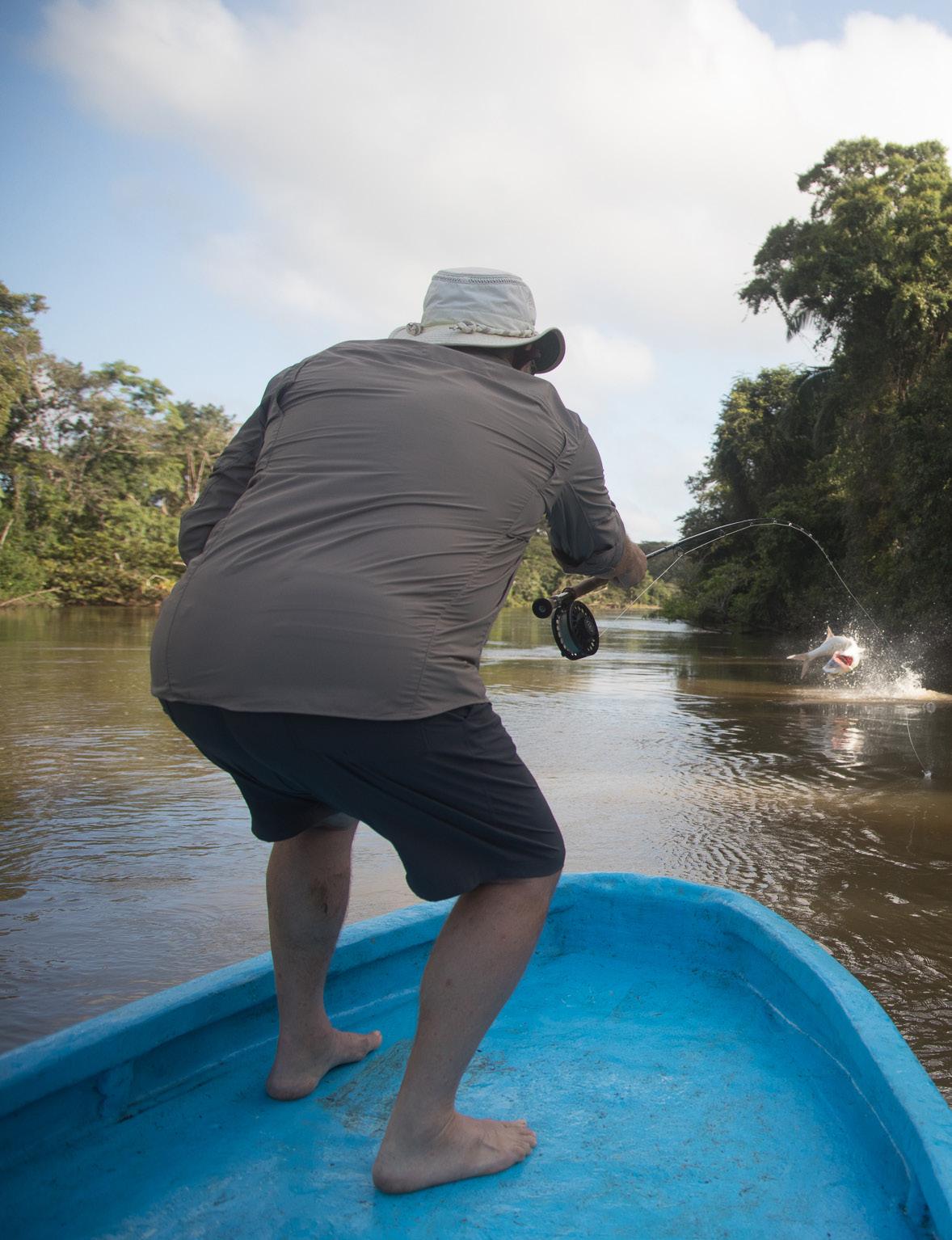

SPRING 2024 VOLUME 21 • ISSUE 2
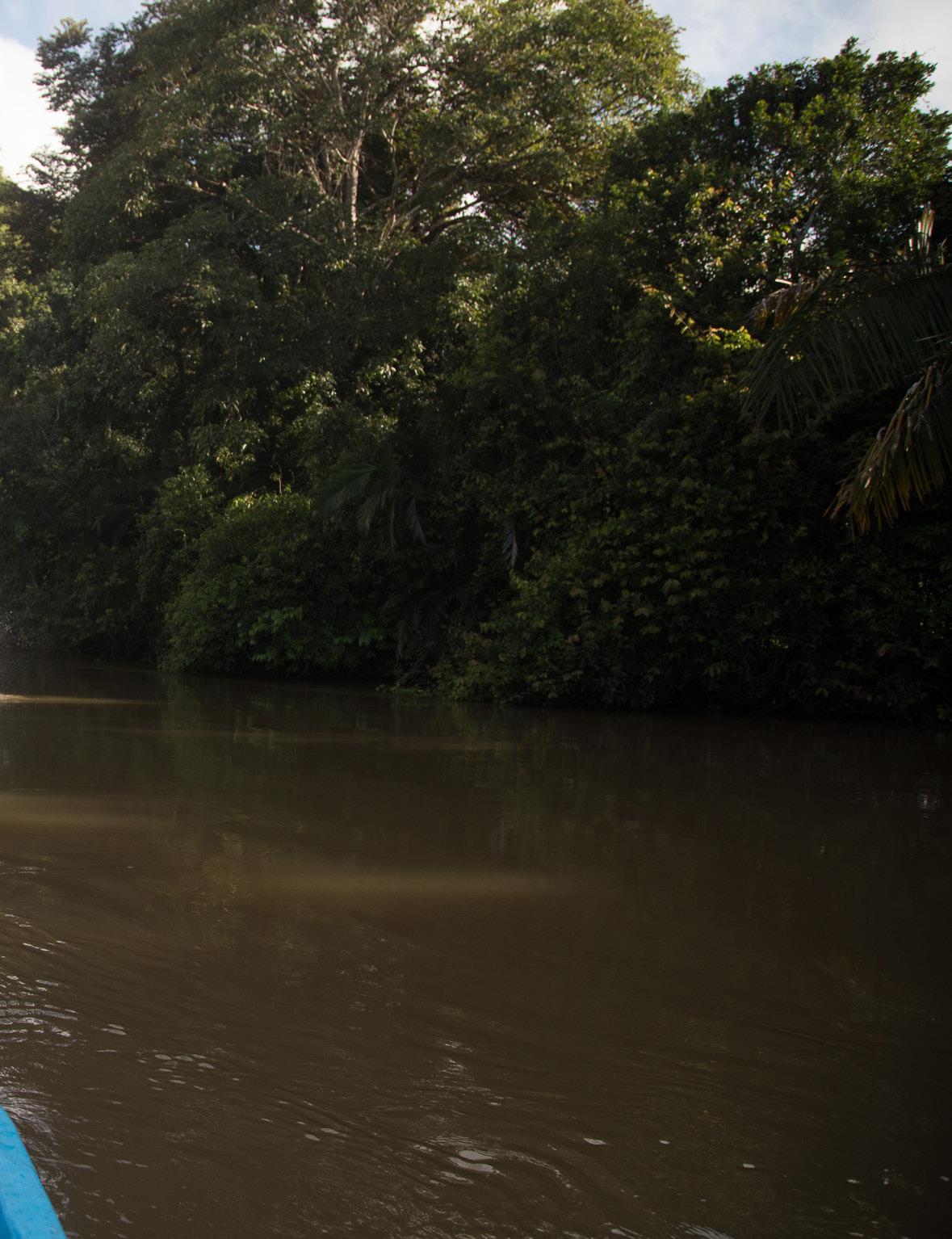

PUBLISHERS Jack Tallon & Frank Martin CONTENT CONSULTANT Landon Mayer EDITORIAL Frank Martin, Managing Editor frank@hcamagazine.com Landon Mayer, Editorial Consultant Ruthie Martin, Editor ADVERTISING Brian La Rue, Sales & Marketing brian@hcamagazine.com Direct: ( 303) 502-4019 Mark Shulman, Ad Sales Cell: (303) 668-2591 mark@hcamagazine.com DESIGN David Martin, Creative Director & Graphic Designer PHOTOGRAPHY Frank Martin, Landon Mayer, Brian LaRue, Angus Drummond STAFF WRITERS Frank Martin, Landon Mayer, Brian LaRue, Joel Evans, David Nickum, John Nickum, Peter Stitcher Copyright 2017, High Country Angler, a division of High Country Publications, LLC. All rights reserved. Reprinting of any content or photos without expressed written consent of publisher is prohibited. Published four (4) times per year. To add your shop or business to our distribution list, contact Frank Martin at frank@hcamagazine.com. Distributed by High Country Publications, LLC 730 Popes Valley Drive Colorado Springs, Colorado 80919 FAX 719-593-0040 Published in cooperation with Colorado Trout Unlimited 1536 Wynkoop Street, Suite 320 Denver, CO 80202 www.coloradotu.org HCA Staff ON THE COVER: PHOTO BY LANDON MAYER MAGAZINE CONTENTS 08 TAILS UP TIPS BY LANDON MAYER 14 COSTA RICAN JUNGLE TARPON ADVENTURE BY BRIAN LA RUE 22 PROTECTING THE HEADWATERS BY COLORADO TU STAFF 28 CU BOULDER CLUB HIGHLIGHT BY COLORADO TU STAFF 34 CAN’T FISH IN THE WIND BY HAYDEN MELSOP 36 MASTERING THE DAVY KNOT BY PETER STITCHER 40 FIT TO BE TIED BY JOEL EVANS 42 PRESIDENTS LINE BY GREG HARDY 44 RESTORING THE KAWUNEECHE VALLEY BY CELIA SHENEMAN 50 WATERS OF THE USA BY JOHN NICKUM

TAILS UP TIPS
by Landon Mayer

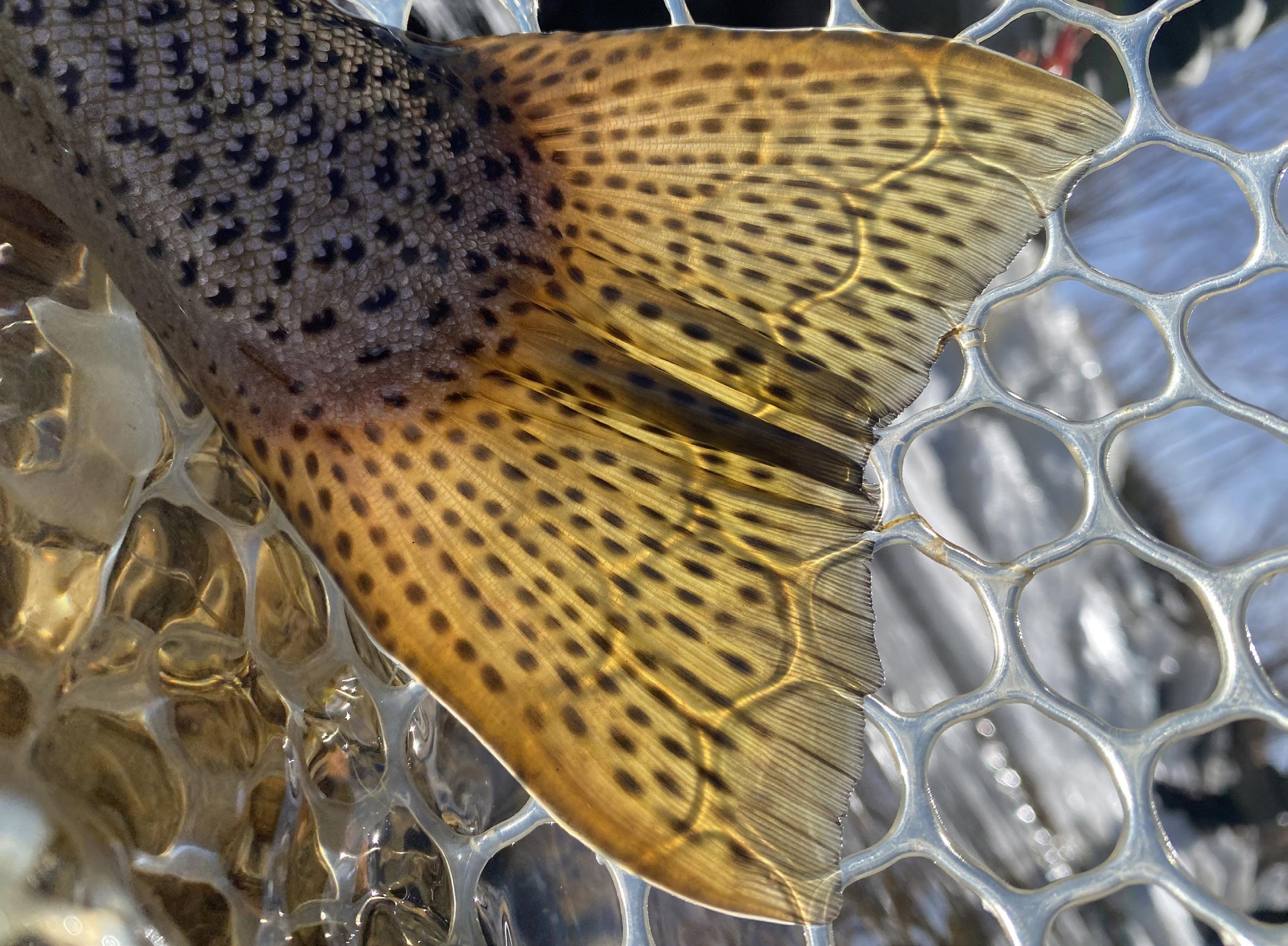
Like the term “Surfs up, ” “Tails up” is a great way for anglers to wish one another luck in a friendly way. It is also the most important part of a trout's body, and a great giveaway for anglers to learn from. I have always appreciated the beautiful details each trout's tail displays in color, spots, size, and strength, so that you are lucky enough to go into battle against a worthy foe. It also serves a purpose for anglers to daily find more success, whether it is sight fishing, delivering dry flies, or meeting a fish. The following tips have helped me to be more effective by learning how to identify more trout “paddles,” and use them for an angling advantage.
Tail Detection
Sight-fishing is one of the best ways to become a better angler. It allows you to cover water effectively,
and learn more about the trout’s behavior and movements. The biggest problem is that many anglers look for a detailed image of the trout's body, which is only visible a small percentage of the time.
The first and most important things to look for are the most visible parts of the trout’s body; they are closer to the surface, and thus easier to detect. I always hunt for the top of the tail or the dorsal fin. Another advantage in locating these body parts, especially the tail, is that they move when the trout holds its position against the current, or swims in still water.
In dark water or locations with contrasting colors of water, the white of the trout’s mouth is a big giveaway to the fish’s location, and a sign that it is actively feeding. I have found over the years that I sometimes see brighter colors of orange or pink inside the fish’s mouth. This is most common in large trout that have a high-protein diet, which changes the pigmentation of a trout’s body and the inside of its mouth. Instead of
High Country Angler • Spring 2024 www.HCAezine.com 10
relying on body color to see fish, I look for the mouth color of trout that are either feeding, or so big that the inside of the lower jaw is exposed, even when the trout attempts to close its mouth.
Seeing the Tail Direction
In preparing to deliver dries to moving targets, you need to see the path of the feeding trout. Look to see if it’s moving left to right, right to left, toward the bank where you’re standing, or away at an angle. The best visual, being the fish’s head, can be the hardest to see, because it will re-submerge immediately after the rise. I prefer the tail that slowly slithers below the surface shape like a forward triangle pointing in a swimming direction.
Some fish will sip or suck the adult off the water without exposing any part of their body. In this situation, look for a wake in the ring left after the rise. With the target so close to the surface, the dorsal or tip of the tail will leave the wake—again forming an arrow in the direction the trout is hunting its next meal.

And last but not least is the Hail Mary cast--you know the one--when you simply have no clue what direction the fish is moving. In this frantic state, you will need to pick a side and hope you are ahead of the action.
Overshooting the Target Zone
It is difficult to land the fly directly in front of the cruising target, especially at longer casting ranges. To ensure the imitation will be seen, I prefer to overshoot. This will give me breathing room to move the fly into position to intercept the trout and its viewing lane. In some situations, the extra distance will not make a difference with fish heavy on the feed.
After you land the fly, the next decision is how to move the bug into position. There are so many ways this can be done, from skating, twitching, or popping. I, for one, am a fan of skating the dry to mimic the moments of a natural caddis, as it is less startling. This technique can be accomplished very easily by simply applying a large mend to the fly line. Matched with a
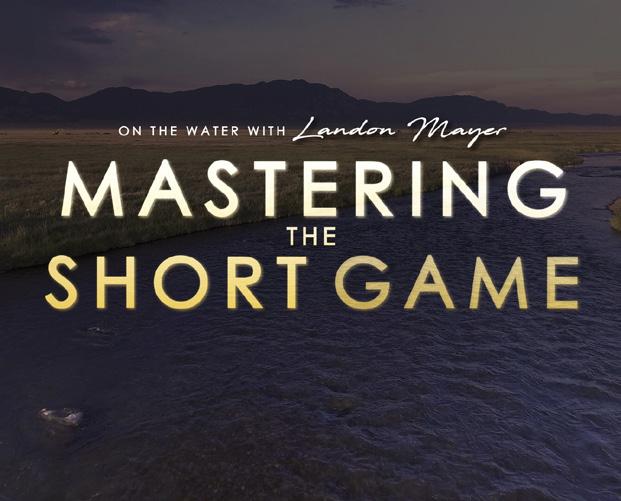


www.HCAezine.com Spring 2024 • High Country Angler 11 WWW.LANDONMAYERFLYFISHING.COM NEW VIDEO! Order Your Copy Today!
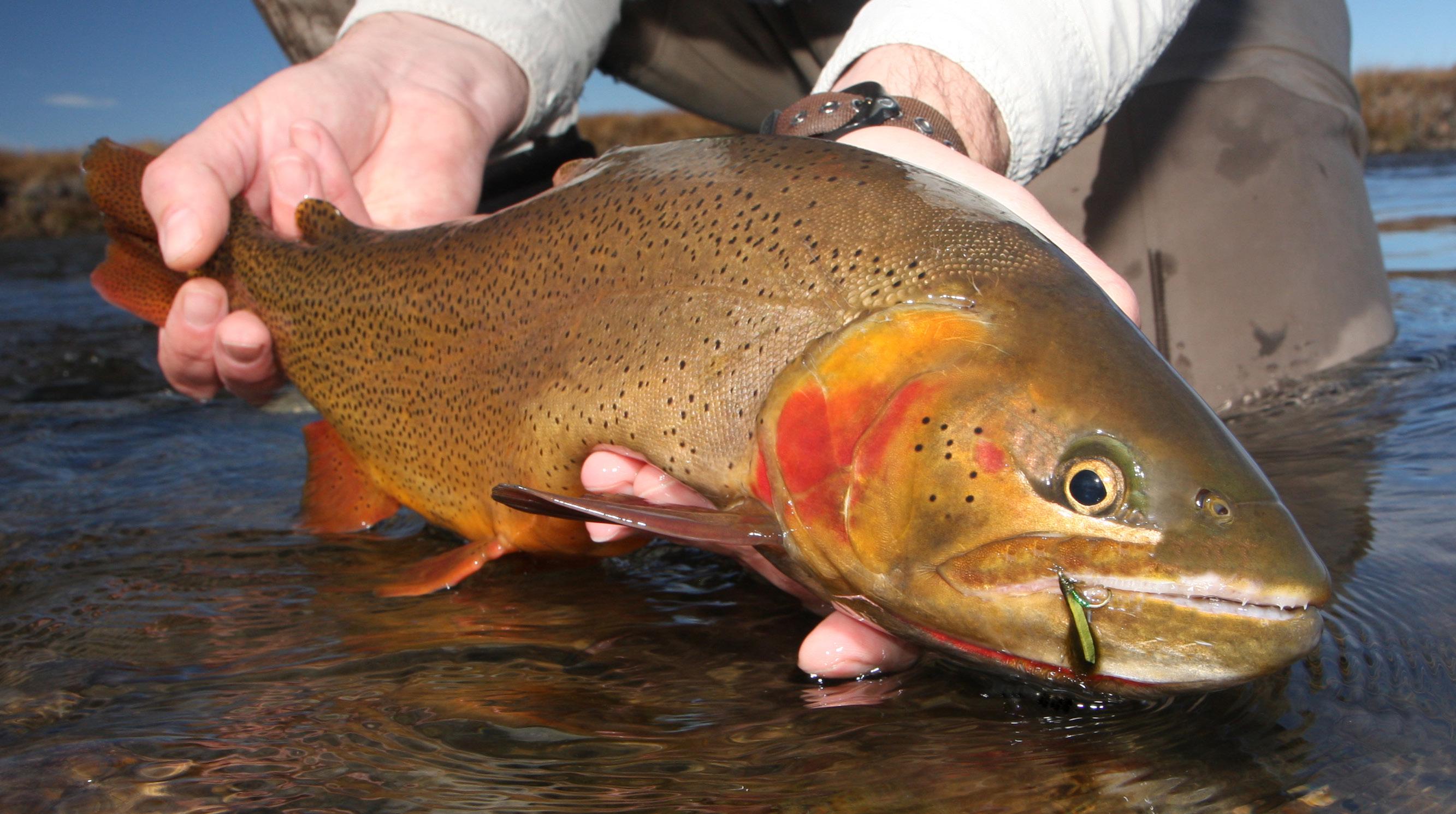
size #14 Goddard Caddis, you are now ready for action.
Lastly, the most important part about moving a fly is not always the act; it is the pause in between. This lets the trout know the food source is not going to escape, or that it is injured.
Netting Head First Paddle Up
The last ten seconds of the fight can be a challenge for many anglers. It is hard not to get too excited and try to rush things by applying too much pressure, or to try netting the fish tail first. To ensure you get your fish in the net, you want to read the signs the trout is giving you. Once it is off balance and rolling at the surface, this is your chance to net the fish head first. This way, if there are any last-minute bursts of energy, it will shoot into the net.
To position yourself to have an extended reach with the net, you want to extend your rod up and behind you at a forty-five-degree angle. Then, with the net hand, reach
down and extend out at a forty-five-degree angle. This will give you enough distance to net the trout head first, even with a ten-foot leader.
The tug of war between you and the trout is a challenge that makes this sport very exciting. Knowing when to adjust, and apply the right amount of power, will ensure the fish's safety while giving the satisfaction of knowing that trophy will live to fight another day after you win the battle.
I hope these “tails up tips” bring you more success this spring, in still and moving waters. The best visual of any tail is watching the trophy swim off to fight another day.
About Landon
Landon Mayer is a veteran Colorado guide and author of several books. His newest book, Guide Flies: Easy-to-Tie Patterns for Tough Trout, can be purchased on his website at www.landonmayerflyfishing.com. You can follow Landon on Instagram at @landonmayerflyfishing.
High Country Angler • Spring 2024 www.HCAezine.com 12
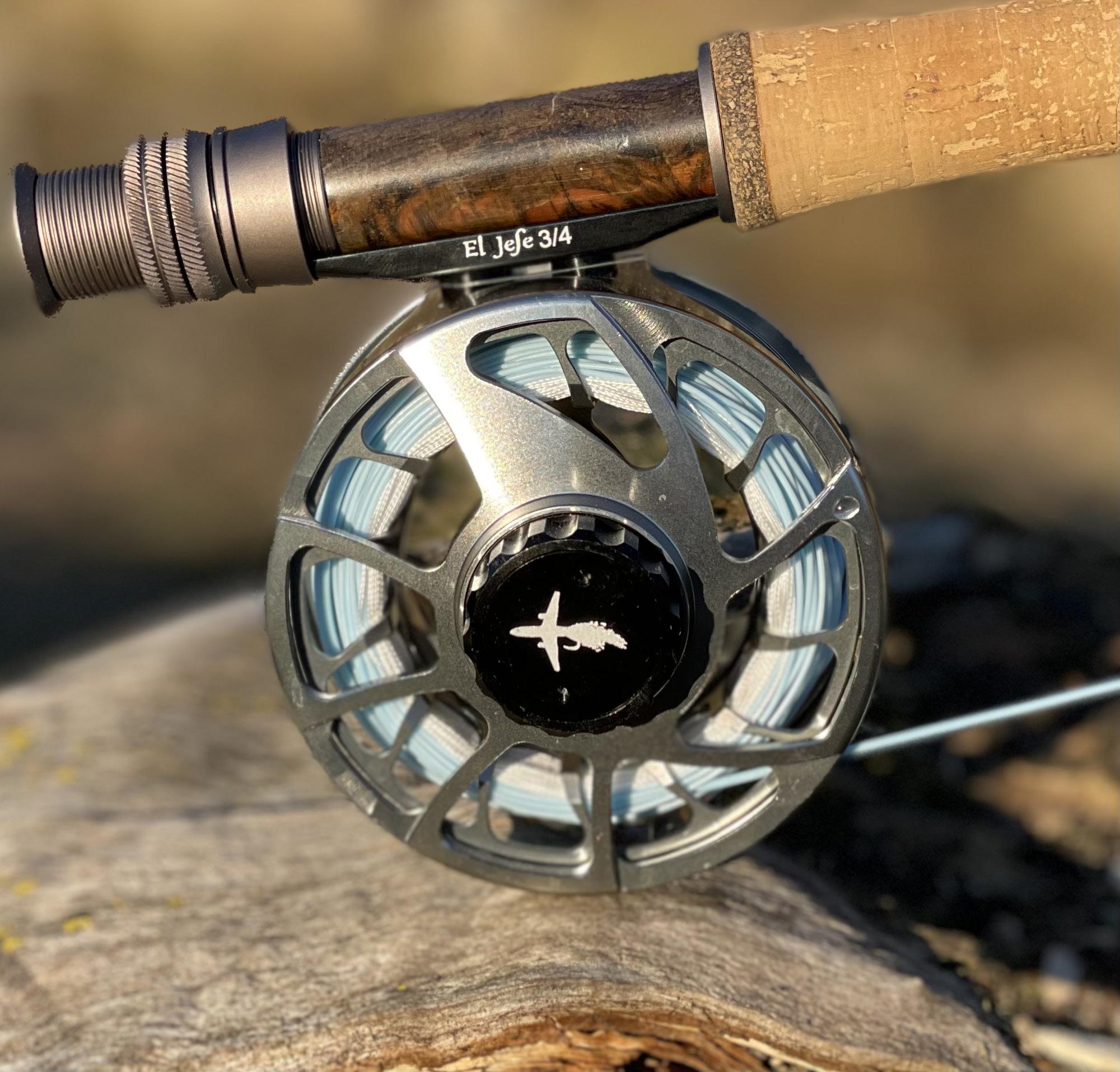
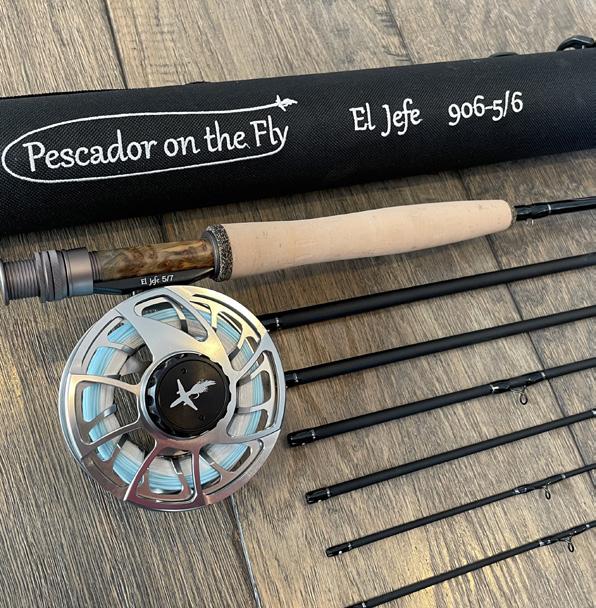

We are a huge supporter of Trout Unlimited, and proudly send around 10% of our sales to our partners at TU. El Jefe Series Packable Fly
Pescador on the Fly is a small, familyowned business. We keep our overhead low to pass on big savings to anglers all over the world. The El Jefe Series uses highperformance components, available from 0-10 weight and in 4- or 6-section rods.
“El Jefe is The Boss of Packable Fly Rods”. Fly Fisherman Magazine Gear Review



www.HCAezine.com Spring 2024 • High Country Angler 13 pescadoronthefly.com
Best
Pescador
Fly
The
Packable Fly Rod Combos on the Market.
on the
Bonus Gear Pack
Jefe Combo Purchases While Supplies Last. A &185+ Value!
Rods FREE
with All El
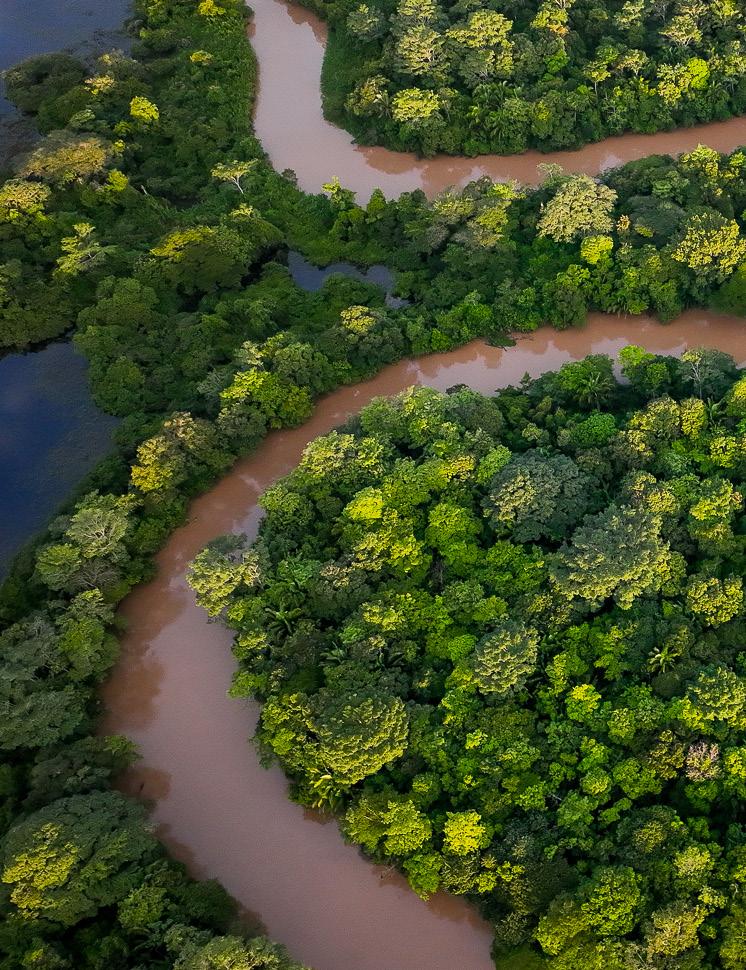 PHOTOS
PHOTOS
BY THOMAS ENDERLIN
COSTA RICAN JUNGLE TARPON ADVENTURE
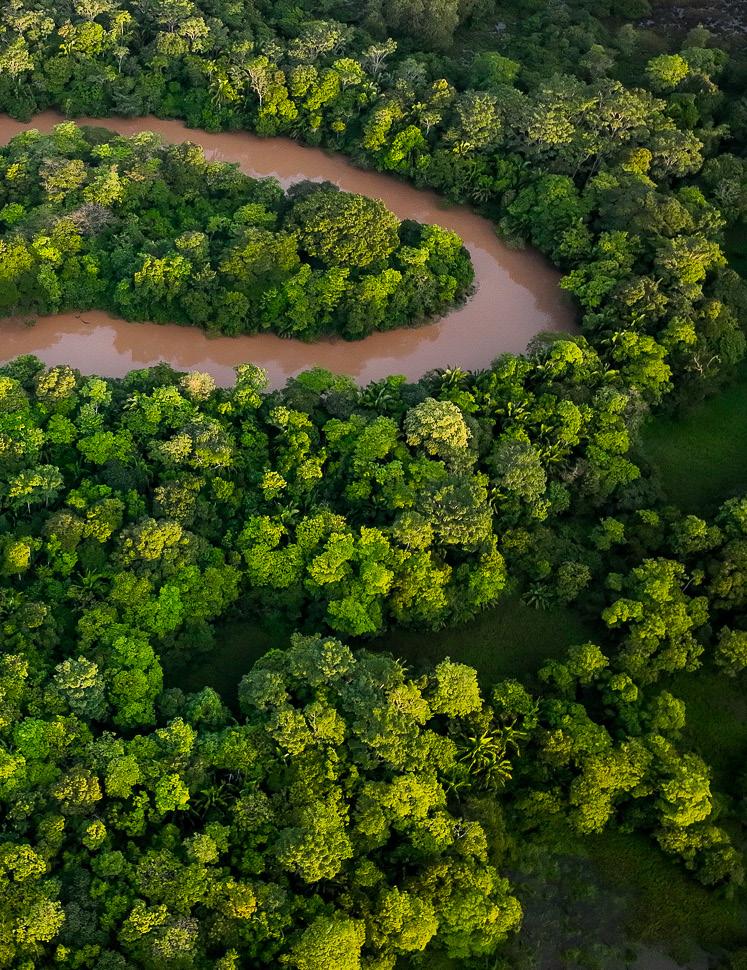 by Brian La Rue
by Brian La Rue
Get your passport ready! We are going international and traveling south for this destination feature. It’s Costa Rica, and we are going tarpon fishing. No, not on the salt flats that we are accustomed to seeing; this is in a jungle setting. Sounds like a Naked & Afraid episode—but please keep your clothes on, bring a 12-weight and plan your adventure, soon!
“When people think about catching tarpon, I doubt they imagine an environment like the Jungle Tarpon Reserve here in Costa Rica,” said Thomas Enderlin, owner/guide at Fly Fishing Costa Rica (www.flyfishingcostarica.com).
“Some 150 miles from the salt, this river is purely freshwater, surrounded by a thick, lowland rainforest,” continued Thomas. “Monkeys, jaguars, toucans, and all sorts of other creatures share the river, which is in many places no wider than a medium-sized trout stream.
“But what makes this place even more special is that even though the fishing can feel like throwing streamers to brown trout—lending itself to a some-
what intimate and familiar experience, the tarpon here are fully- grown adult giants. Hook up and hold on! They often fly straight into the trees!”
A typical day with Tom and his team starts early, with clients sipping gourmet coffee in anxious anticipation as the unfamiliar rainforest sounds echo across camp.
“We jump into the boats around 5:30 AM and start the morning searching for signs of tarpon,” said Enderlin. “After many miles of great fishing have been covered, lunch is a simple, yet delicious Costa Rican meal served by a local family. We return to camp for a siesta during the hottest part of each day, and return for the evening activity as the call of howler monkeys rumbles through the deep green landscape. An exquisite dinner back at camp that rivals even the finest of international kitchens awaits the angling party, with locally sourced and healthy cuisine.”
I mentioned a 12-weight fly rod in the opener, but Thomas says you’ll also want to be sure you have multiple fly lines to match the situation.
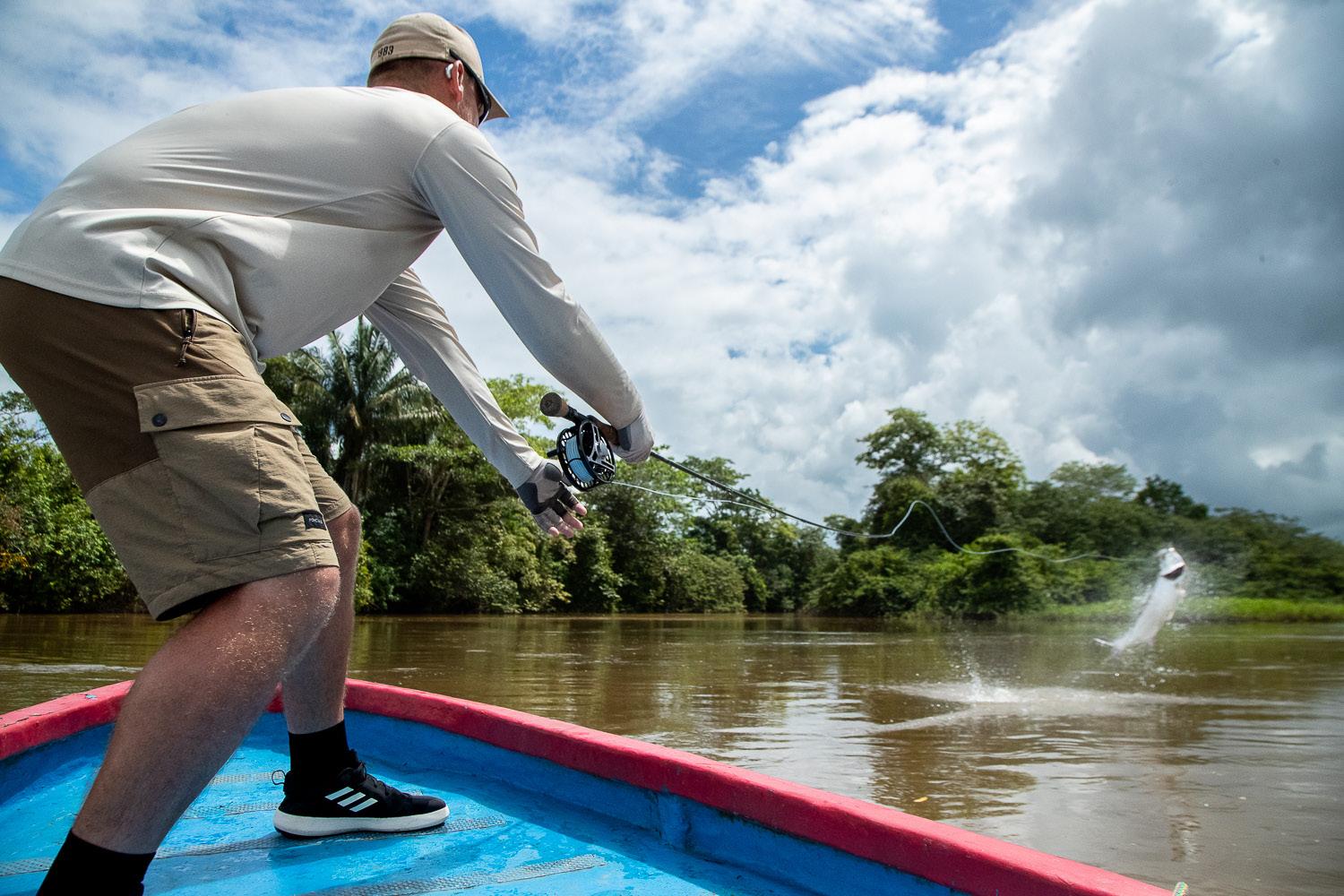
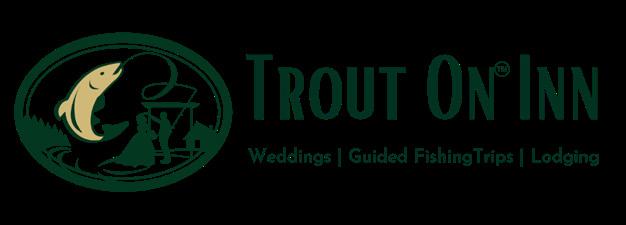
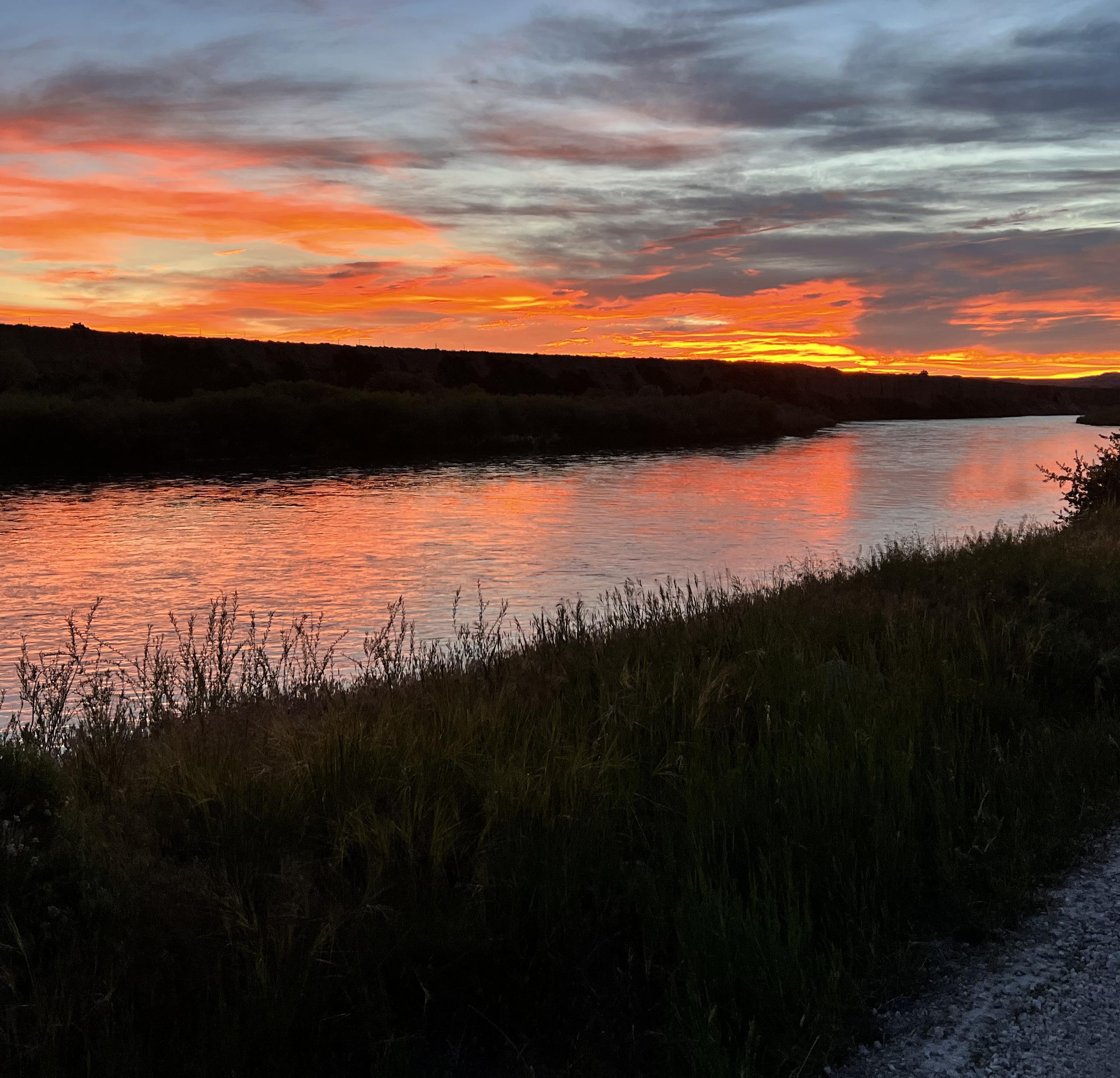
www.HCAezine.com Spring 2024 • High Country Angler 17 Create Memories That Last a Lifetime On the North Platte River www.troutoninn.com Outdoor Wedding Venue, Guided Fishing Trips, Blue Ribbon Fishing, Drift Boat Rentals, Lodging, Shuttle Service, and so much more! Trout On™ Inn 18193 State Highway 220 Casper, WY 82604 (307) 462-1917
“We usually fish various lines throughout a given day, so clients are recommended to bring 12 -weights rigged with full intermediate, and spare spools with sink-tips, and floating lines,” added Enderlin. “We’ve found that this allows our guide team to best handle what is a diverse and sometimes challenging fishery. The tarpon here eat a variety of small cichlids and other “sardinas,” so flies that match the hatch use a variety of vivid colors and shapes. As a last resort, black and purple flies are always a favorite if, in the
end, the fish don’t react to the tropical colors.
“The fishing is either in the river or lagoons,” says Enderlin. “In the river, we search for tarpon either rolling or actively smashing bait in the branches that hang into the currents, and anglers present flies on a swing much like you would for oversized trout.
“Trout or salmon anglers can do quite well here, as they understand how to present a fly in current,” added Thomas. “The lagoons are what we consider the archery of our river, with guides masterfully

poling skiffs across the black mirror of tannic water with anglers perched at the ready on the bow. As soon as a tarpon rolls or wakes within casting range, a good cast is often rewarded by an explosive eat and the knee-rattling jumps for which the silver king gets its name.”
Sounds good to me, but what do the fishing packages look like? Fly Fishing Costa Rica offers a weeklong all-inclusive package that consists of two half days of fishing and five full days of fishing. They only
fish two boats per week, so the groups remain small (1 or 2 anglers per boat). The lodge is a large-shared house located right on the river, complete with air conditioning, four bedrooms (single lodging), three bathrooms, and a pool.
“The tarpon season is best from August to December, but in October and November, we get into the thick of the Jungle Reserve action,” said Thomas. “The fishing in our river varies from week to week, so any week can be the best of the year. The fishing

19
season coincides with Costa Rica’s rainy season, so anglers should be prepared for the occasional tropical downpour!”
Overall, Costa Rica is one of the most biologically diverse countries on the planet, with a vast system of national parks preserving and celebrating the incredible birds and other rainforest wildlife. It’s also an incredibly peaceful country with some of the friendliest people. Getting there is easy, with direct flights from Denver and many other major airports around the world.
“We offer great fishing, food and accommodations,” said Enderlin. “The country is home to warm and friendly people. What else could make this tropical paradise any more worthy of a bucket list destination?”
In addition to the tarpon opportunity we’ve highlighted, Fly Fishing Costa Rica also specializes in trips for sailfish, coastal action
for species like Roosterfish, and even a few opportunities for Cloud Forest Rainbow Trout--- yes, rainbow trout!
Visit www.FlyFishingCostaRica.com to see all these amazing trip options, and reach out to Enderlin for more information at tom@flyfishingcostarica. com. Maybe try for the Costa Rica Grand Slam and catch a sailfish, tarpon and rainbow trout. Good luck!
About The Author
High Country Angler contributor Brian La Rue enjoys giving fly fishers ideas of where to go for an adventure. Feel free to reach out to Brian at Brian@hcamagazine.com if you want your lodge or guide service featured in an upcoming promotional marketing plan.

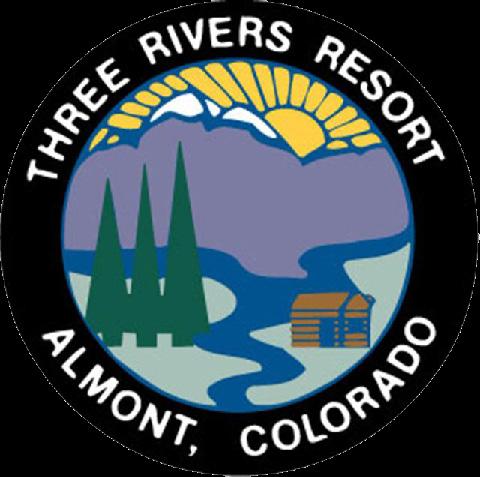
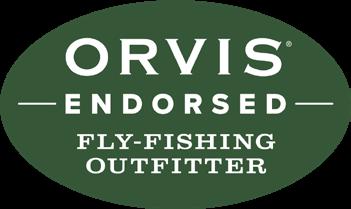
• 35+ years experience on Colorado’s best rivers
•
•
•
High Country Angler • Spring 2024 www.HCAezine.com 20
Service
Three Rivers Resort 970-641-1303 www.3riversresort.com
Willowfly Anglers Guide
at
• Gunnison River – Taylor River – East River
• Private Lease Fishing for the ultimate experience
Beautiful
Cabins, Vacation Homes & Lodge Rooms
Summer Seasonal BBQ
Restaurant
Complete Fly Shop,General Store & Activities
cabins, lodge rooms and vacation homes time restaurant Colorado Outfitting Lic. #389. Colorado River Lic. #D0092
Desk


Join our advertisers Reach the Fly-Fishing community GOFISHING HCAMAGAZINE.COM

Protecting the headwaters

23 by Colorado TU Staff
On March 7, CTU held its 2024 River Stewardship Gala at the Denver Museum of Nature and Science, drawing more than 300 river supporters to join in celebrating and raising funds for Colorado’s rivers. As a centerpiece of the event, the River Stewardship Award was presented to Bob and Suzanne Fanch, owners of Devils Thumb Ranch and founders of the Headwaters River Journey Museum in Winter Park. Colorado River Headwaters Chapter President Kirk
Klancke and Mark Eddy presented the award; this article is drawn from their presentation.
The stars had to align to create the paradigm shift that led to the Colorado River Cooperative Agreement and the resulting collaborative efforts in conserving the Colorado headwaters. The first star in this constellation was when then-Mayor John Hickenlooper appointed three conservationists to the board of Denver Water. The next was when the Grand County Government realized our rivers were worth fighting for. The third star to align was Trout Unlimited, coming to the headwaters and asking what they could do to help. Then a fourth star aligned when two Grand County citizens rose to the challenge to help create change and advance the protection of the Colorado River headwaters – Bob and Suzanne Fanch.
In the lead-up to the Cooperative Agreement, the Fanches contributed to the effort in several critical ways. Bob dedicated his time to meeting with TU and Denver Water staff to discuss much needed mitigation to help our struggling rivers. He also traveled to testify publicly at Wildlife Commission hearings to advocate for mitigation. When the Wildlife Commission approved a plan that included far too little mitigation, Bob and Suzanne brought their children, Rachel and Zach, to a CTU demonstration on the steps of the Capitol building. When asked why they had come, they said they wanted their children to know that they needed to speak up if they saw something wrong.
Critically, Bob and Suzanne, with help from their friends, the
Finlons, paid for an onstream sediment transport study that showed how stream modeling for the Environmental Impact Statement was severely inaccurate. Shortly after the results of this study were provided to the EPA, officials from the Denver agency called Trout Unlimited and Grand County to report that while they still didn’t think that they had to offer additional mitigation for their impacts on the Fraser River, they wanted to talk about what we believed mitigation should look like. Several meetings later, we had a negotiated agreement.
While the Cooperative Agreement was a significant milestone, its success hinged on the follow-through

High Country Angler • Spring 2024 www.HCAezine.com 24
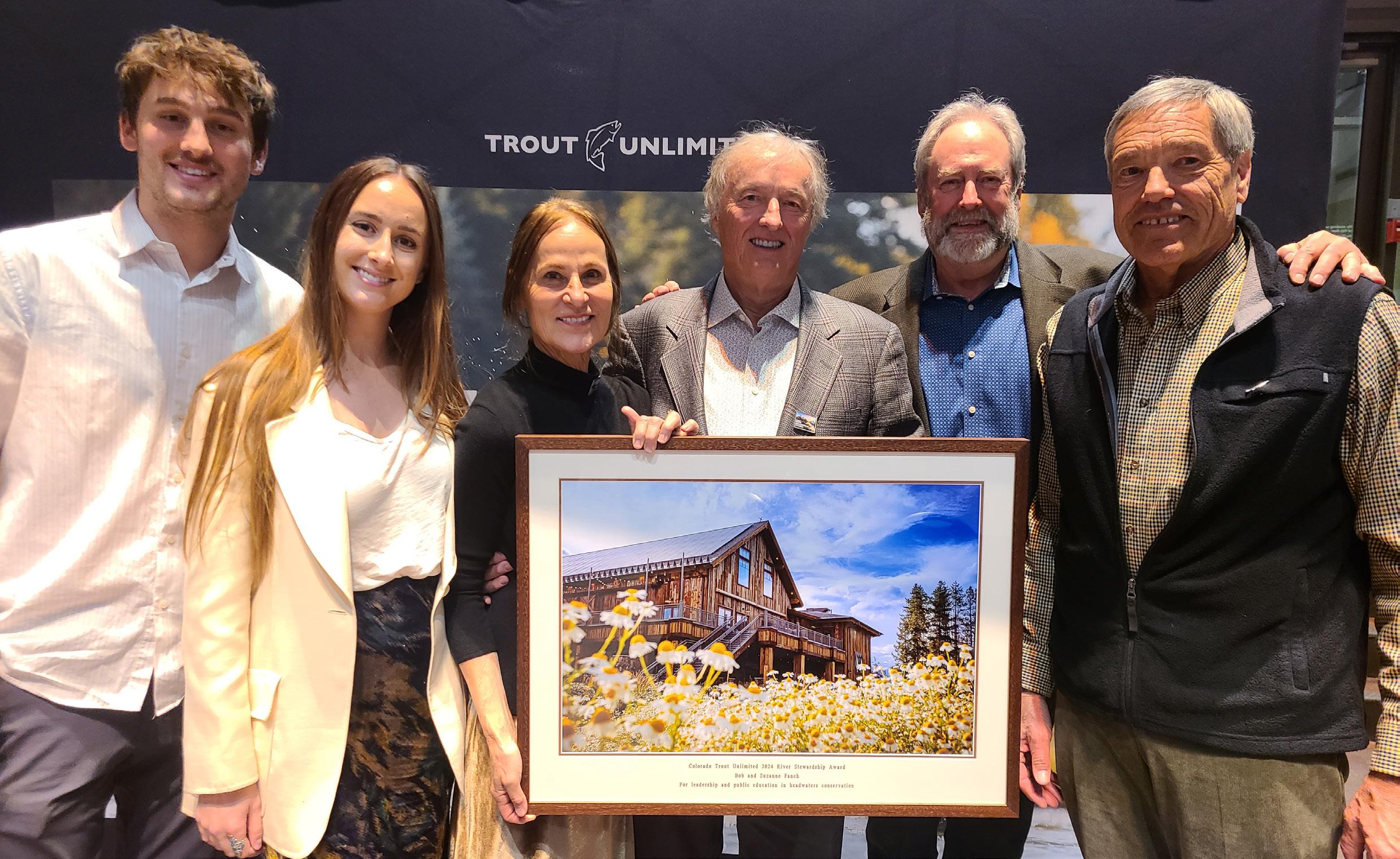
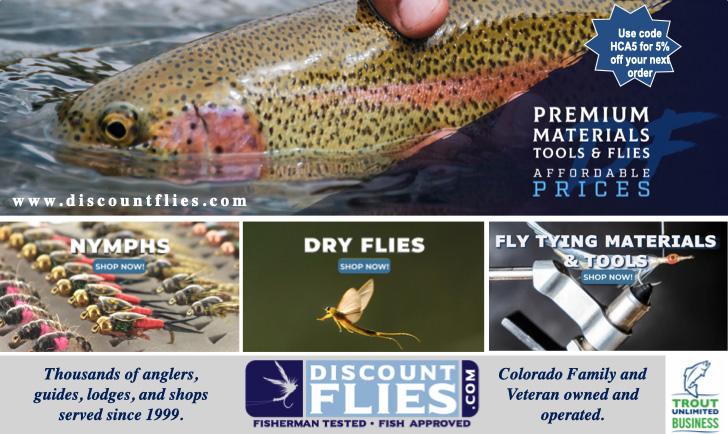
www.HCAezine.com Spring 2024 • High Country Angler 25
after the agreement was reached, and the Fanches have continued to support headwaters protection, including support for the adaptive management “Learning by Doing” program in several key ways:
• Learning by Doing was intended to be funded through the Cooperative Agreement, funding that was due upon Denver Water securing all of the permits for their Moffat Firming Project. Eleven years later, Denver Water still doesn’t have its final permits, so Learning by Doing has been operating off grants and a steady income stream provided by Bob and Suzanne as a percentage of profit from the Devil’s Thumb Guest Ranch.
• A percentage of the profits from Devil’s Thumb Ranch has also provided a steady income stream to National TU to support the continued work in this area of Mely Whiting, a key mover and shaker in advancing projects protecting the headwaters.
• Bob and Suzanne have given conservation partners access to their property to harvest 9,000 willow stakes that, over the years, have been replanted around Grand County to help stabilize stream banks and improve riparian habitat.
• Bob partnered with Learning by Doing and Denver Water to fund the first Learning by Doing public/private stream improvement project on the Fraser Flats reach. Scientific monitoring has shown this prototype project conducted by Freestone Aquatics has produced considerable improvements in river health. Projects like this one will be the future of healthier rivers in the headwaters.
However, Bob and Suzanne also recognized that the future of healthy rivers depended on an educated population. They went on to conceive and fund one of the country's greatest river education facilities. They built the Headwaters Center as a meeting place for events, river summits, and other related topics. On the ground floor of the Headwaters Center is a 4,400 sq. ft. interactive river museum called the Headwaters River Journey. In the first organizational meeting to create the museum, Suzanne requested that the theme follow the TU documentary Tapped Out. This
film emphasized the importance of rivers to us and to all life and the impacts we as humans have on our rivers, both negative and positive. The Fanches went to Europe to see some of the world's most impressive interactive museums and hired a consultant from Iceland who had created their favorite museum. They also hired ECOS out of Boulder as the general contractor for this most impressive interactive river museum. If you haven’t experienced River Journey, put it on your bucket list. Education is our most effective tool in protecting our rivers, and Bob and Suzanne have given Colorado the country's most effective river education museum.
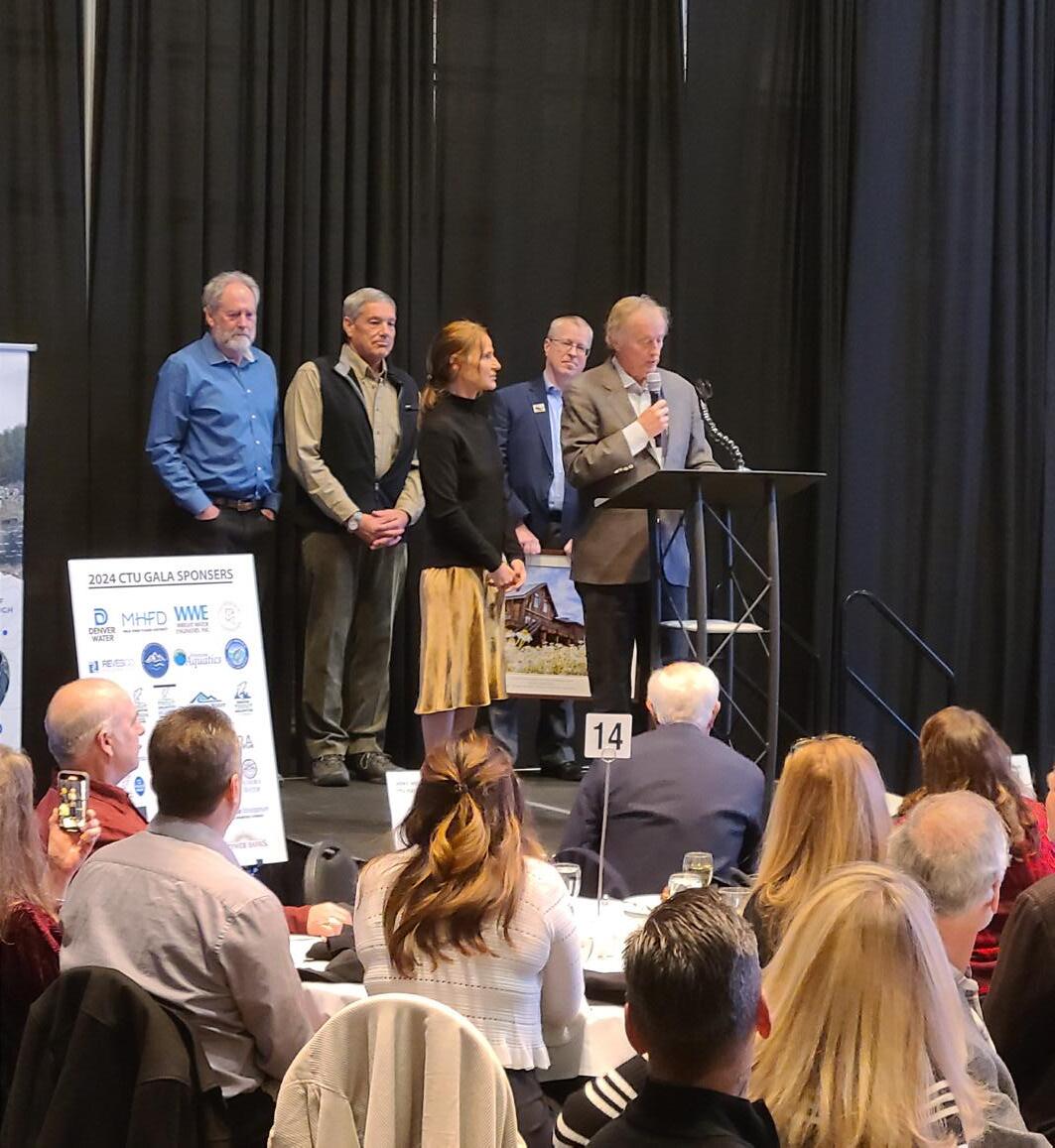
Colorado Trout Unlimited appreciates all of the Fanches' efforts on behalf of Colorado’s rivers and was grateful for the opportunity to recognize them with our 2024 River Stewardship Award.
To learn more
To learn more about this and other stories, visit coloradotu.org
High Country Angler • Spring 2024 www.HCAezine.com 26


THE RIO GRANDE CUTTHROAT NATIVE SERIES REEL AVAILABLE NOW AT A FLY SHOP NEAR YOU OR AT ROSSREELS.COM

27
CU Boulder Club Highlight
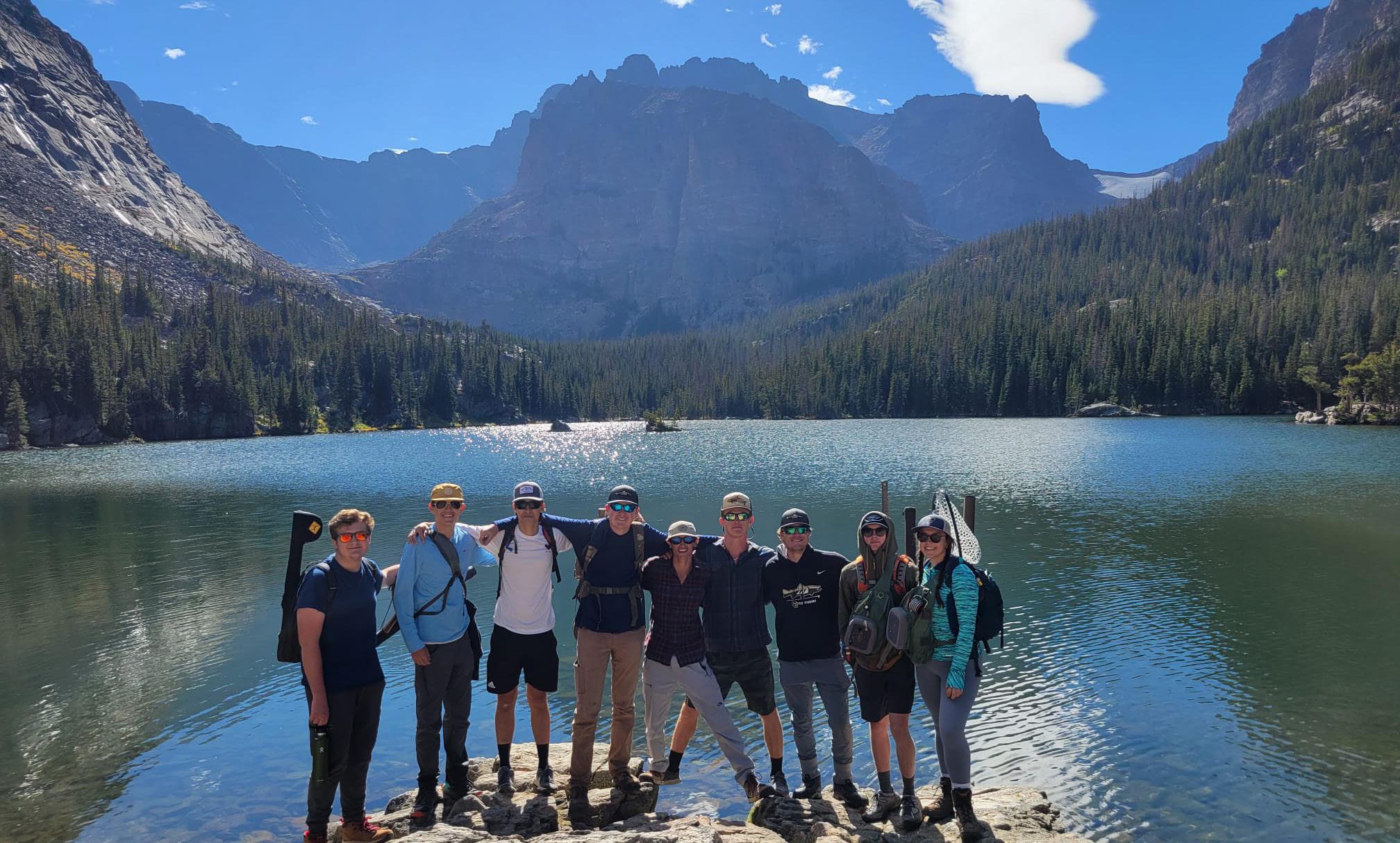 by Jackson Temme
by Jackson Temme



Thanks to Coach Prime and the best mascot in college football, Ralphie, CU Boulder has been at the center of NCAA news for a while now. However, tucked underneath the bright lights of national media coverage and situated in its own corner of campus lies a community of students whose passion for the sport of fly fishing has lasted long since CU last fielded a great football team. The CU Fly Fishing Club, now nearing its 20th year of existence, has consistently provided the students of CU Boulder with an avenue into the sport of fly fishing. As one
of the founding members of Trout Unlimited and Costa Sunglasses 5 Rivers program, the CU Fly Fishing Club represents one of the first examples of a now national movement that has led to the creation of 60+ collegiate fly fishing clubs across the country. Each 5 Rivers club focuses on various aspects of conservation, community, volunteerism and much more. The CU Boulder fly fishing club is special because it is the most effective club at bringing new anglers into the sport. Their mission is to make fly fishing accessible and affordable to all students, while also educating
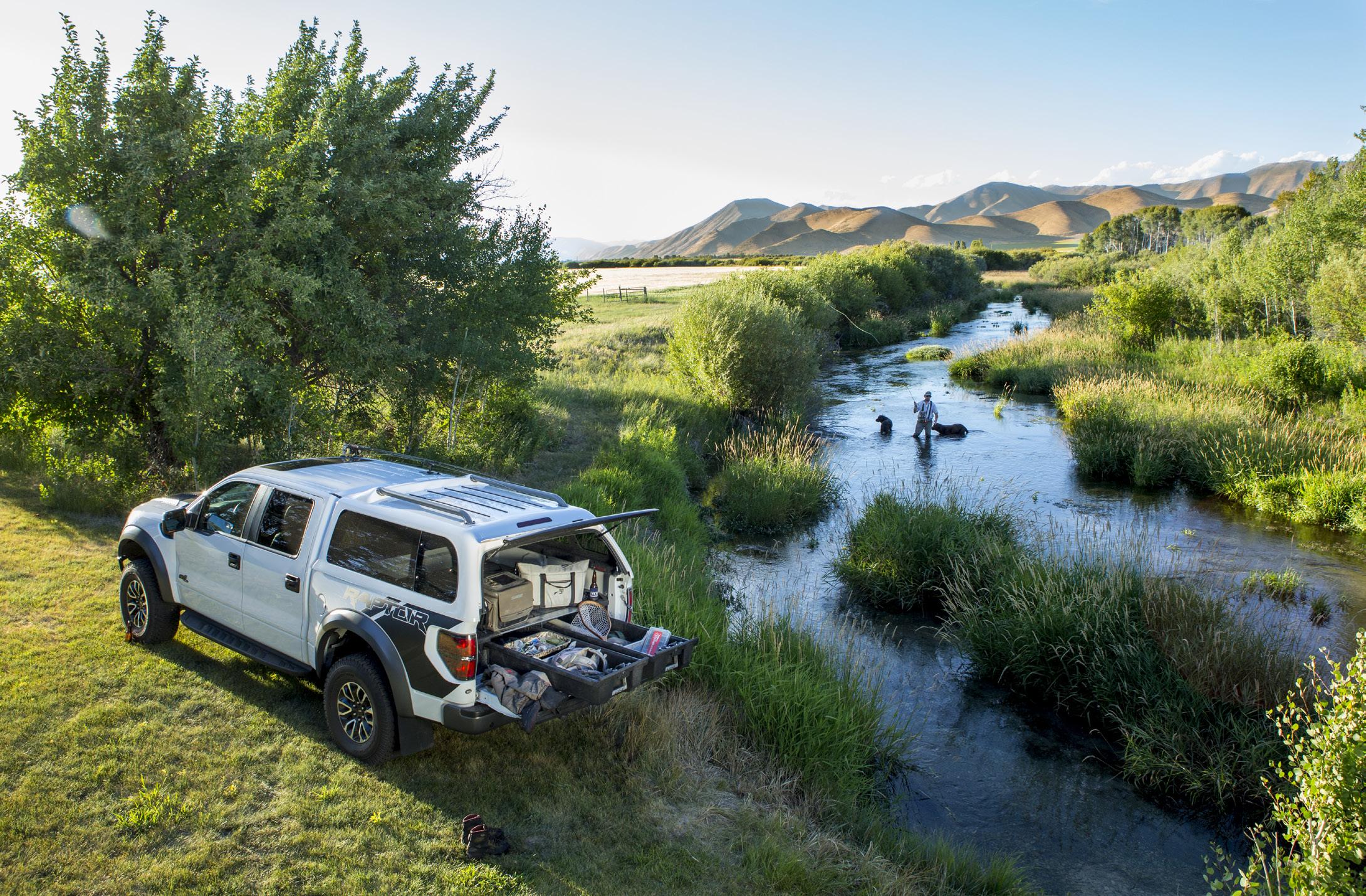

www.HCAezine.com Spring 2024 • High Country Angler 29 We Have You Covered! 5425 S. Broadway Littleton, CO 80121 6955 W. Colfax Lakewood, CO 80214 WWW.AATOPPERS.COM
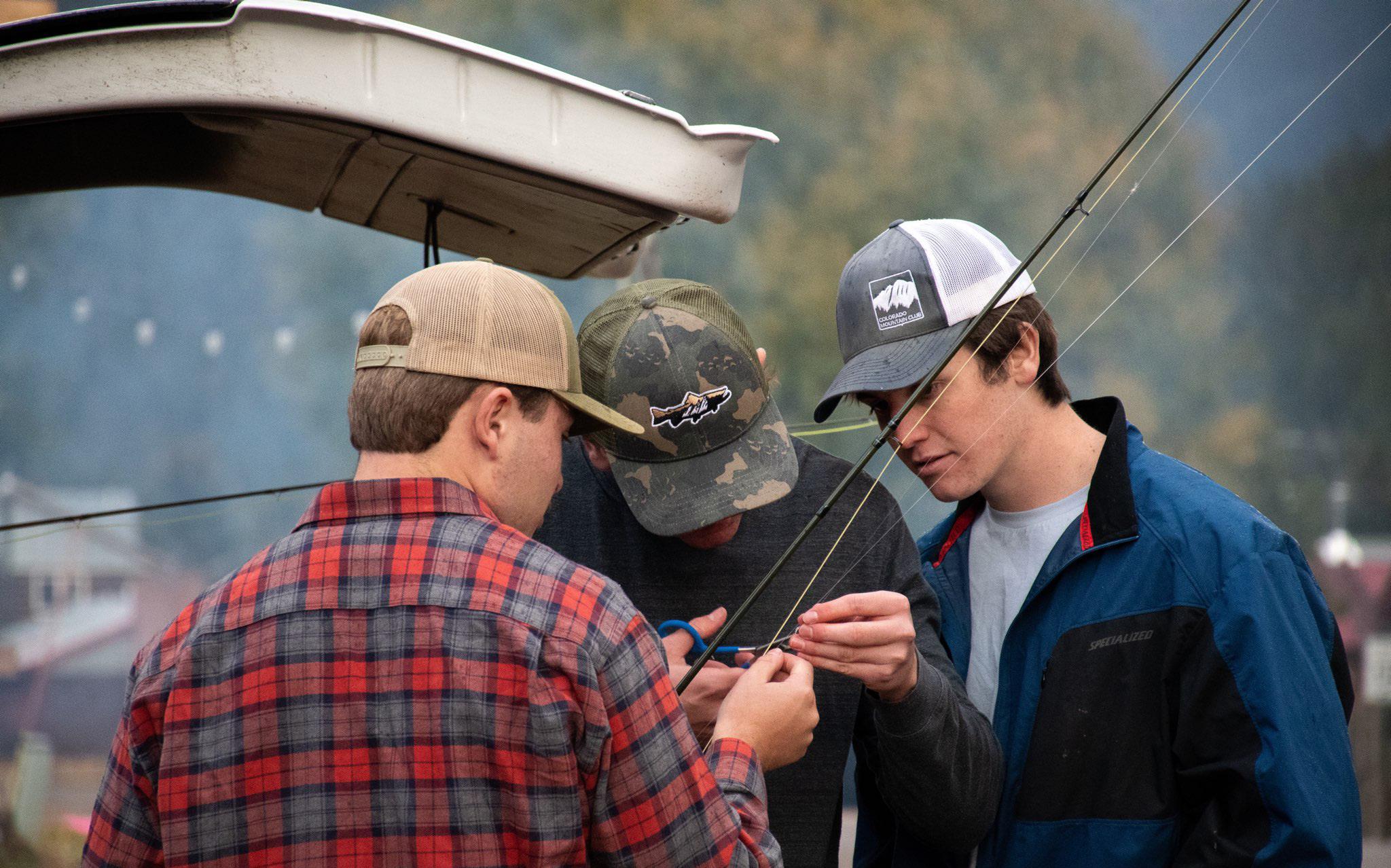



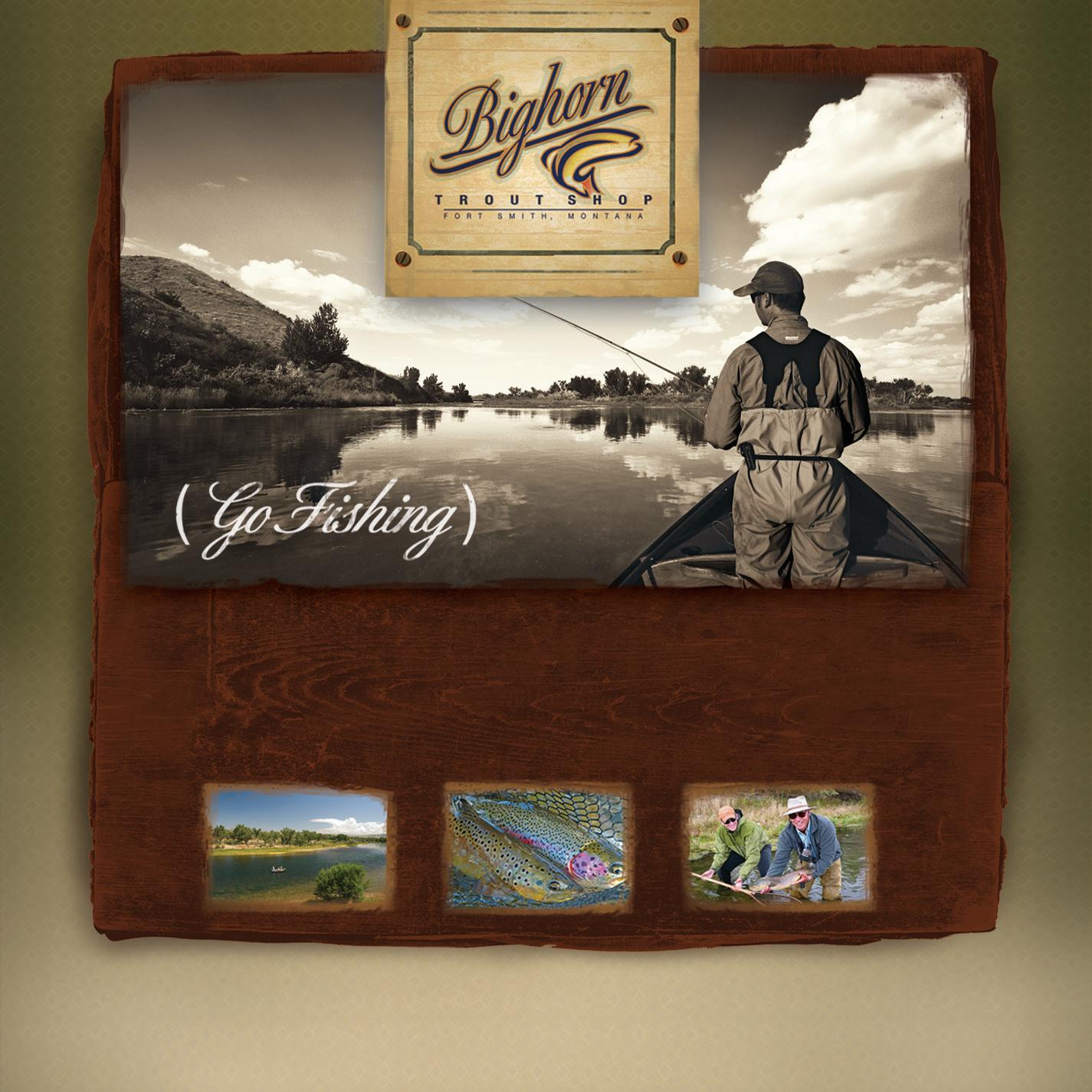

Spring 2024 • High Country Angler 31
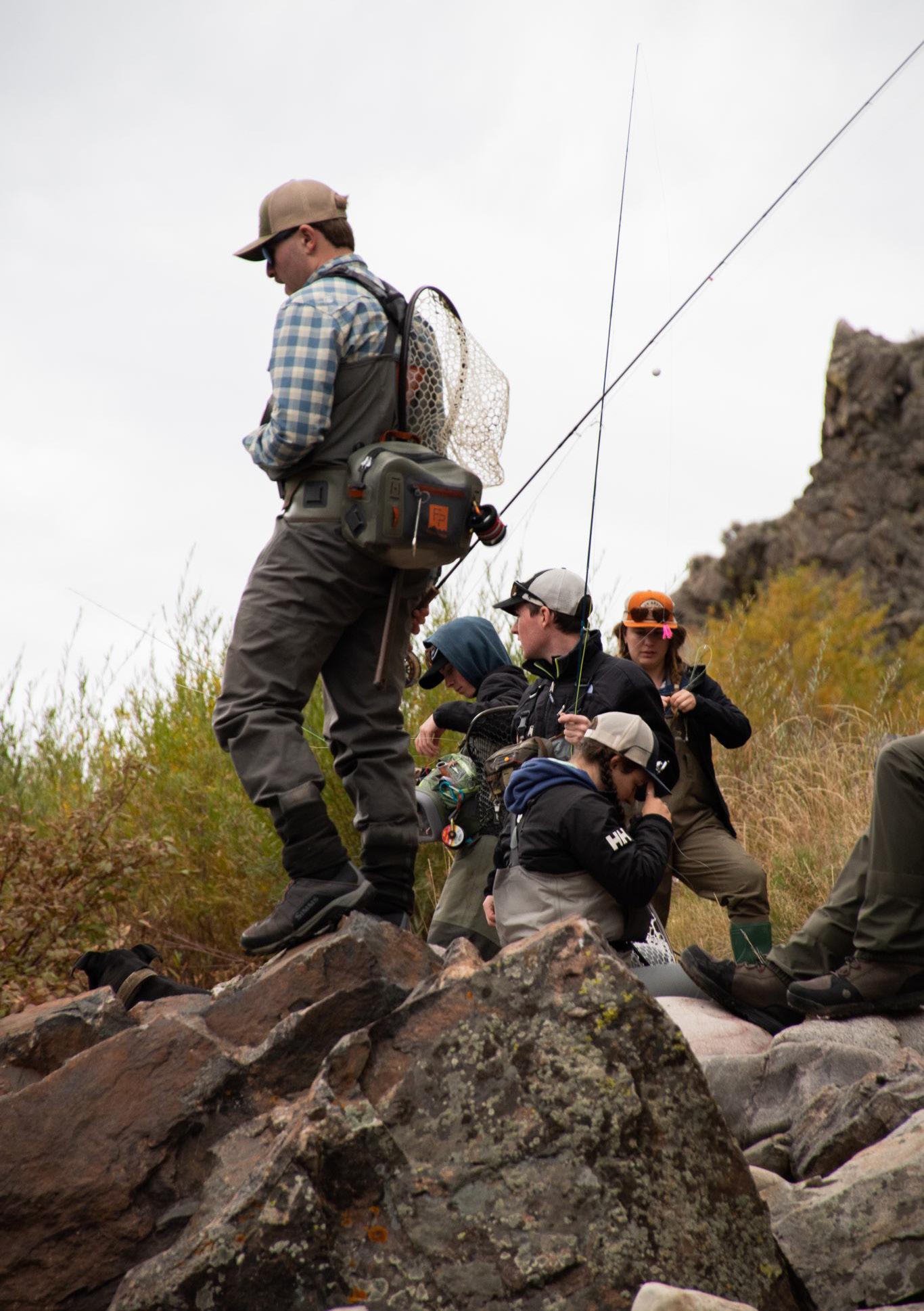
their members about the importance of conservation. In addition, the club does more than its fair share of fishing, ranging from local day trips to weekend-long excursions across the Western US. However, these trips play a supporting role in the club’s primary motivations. For college aged students whose desire to learn often exceeds the contents of their wallets, the club’s mission is vitally important. Through partnerships with Trout Unlimited, Costa, and other industry partners, the club has been able to acquire a vast fleet of rods, reels, and waders for club members to use whenever they desire. The best part? All this equipment is available to members for free. Even more impressive is that the club is free to join for all CU Boulder students.
For the officers of the CU Fly Fishing Club, the consensus is this: there is nothing more rewarding than seeing new anglers fall in love with the sport of fly fishing. They pride themselves on acting as guides on club trips, and dedicating themselves to doing whatever they can to help new anglers experience success. This passion extends from the river to the world of conservation. Through river cleanups and partnerships with the Boulder Flycasters, Colorado TU, and TU national, the club is highly intentional about keeping conservation at the center of everything it does. Through these efforts, its members are introduced to the importance of conserving the natural resources that fly fishing depends on. Now, with membership levels reaching new heights and more women joining the club than ever before, the CU Fly Fishing Club is dedicated to bringing more anglers and conservationists into the fold… one CU buff at a time.

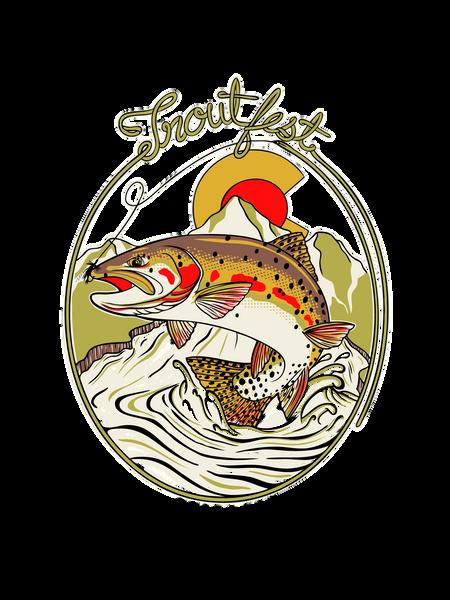
www.HCAezine.com Spring 2024 • High Country Angler 33
EXHIBITORS | MUSIC | FLY TYING | YOUTH ACTIVITIES | CASTING AREAS | FILMS ON THE SCOREBOARD | VIP SECTION | STADIUM TOURS | BALLPARK FOOD & BEVERAGES SATURDAY, JUNE 29TH SATURDAY, JUNE 29TH 2PM - 6PM 2PM - 6PM TROUTFESTCOLORADO COM FREE TO ATTEND! CLICK TO LEARN MORE! (WITH PRE-REGISTRATION) A DAY AT THE BALLPARK CELEBRATING COMMUNITY, CONSERVATION, AND EDUCATION A DAY AT THE BALLPARK CELEBRATING COMMUNITY, CONSERVATION, AND EDUCATION To learn more To learn more about this and other stories, visit @tucosta5rivers on Instagram.
COORS FIELD COORS FIELD
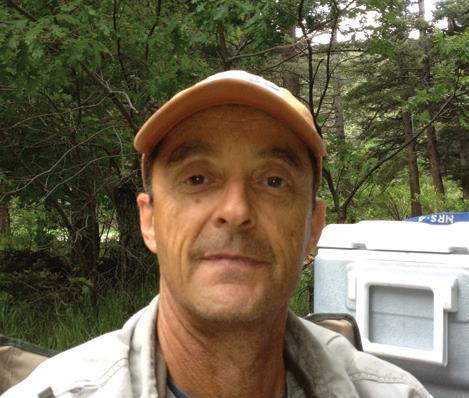
“C
Can’t Fish in the Wind
an’t fish in the wind, can’t fish in Wyoming” - an adage that comes to mind with some frequency this time of the year. While the Arkansas River Valley where I live can be a windy old place during any season, it’s usually breeziest in springtime. Of the four elements, wind is the one least appreciated by myself, a sentiment likely shared by all save the sailors and kite flyers among us. Invisible and intangible, air in motion has the knack of needling nerve endings and leaving tempers frayed.
For fly anglers, wind introduces another factor into an already complex equation. Unlike our spin-fishing counterparts, fly anglers do not have the luxury of a heavy weight on the end of their line to provide ballast when casting to windward. Most of us can muddle our way through the process of casting when the elements are benign, but wind has a way of ruthlessly exposing any deficiency in both attitude and technique.
While your average angler can pick and choose which days to venture out into the elements, think for a moment about the humble fishing guides, those who do not have that luxury of picking and choosing, assuming they prioritize placing food on the table and meeting mortgage payments over malnutrition and
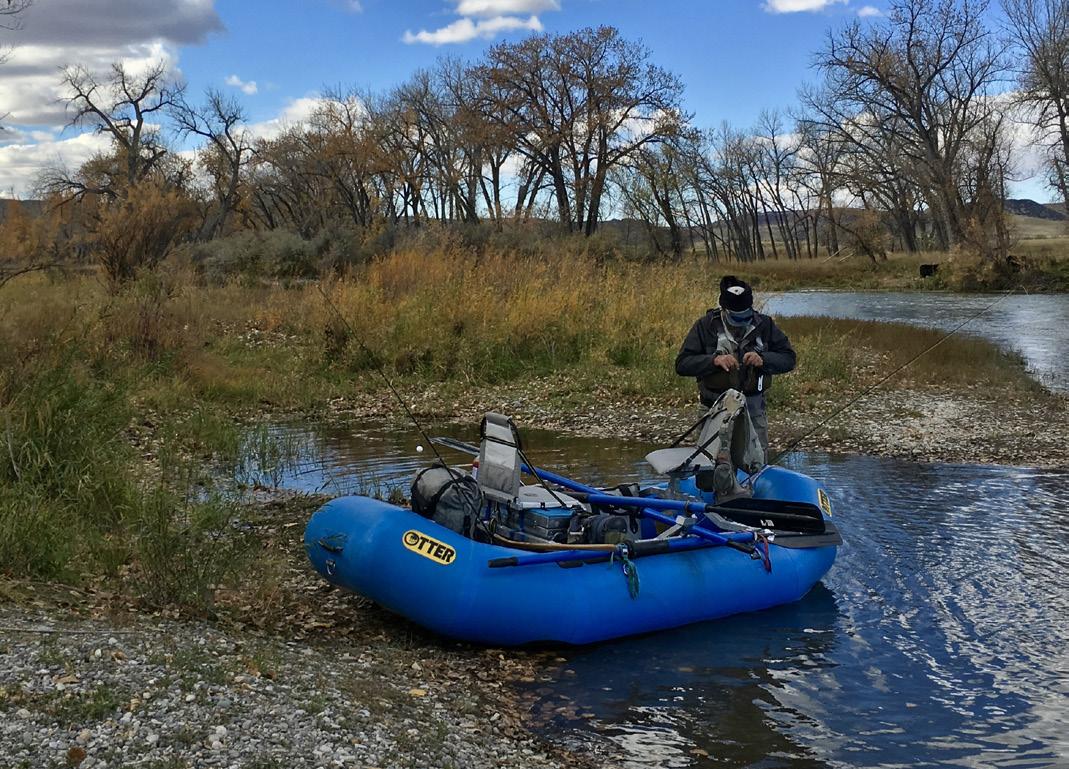
foreclosure. I acknowledge that, strictly speaking, the guide is not fishing themselves, but rather involved in a process far more multidimensional and complex— namely, trying to catch fish through the medium of another person and their associated foibles, hang-ups and insecurities. If you think about it, this renders an already challenging scenario far more so when facing the elements.
While no wind is ideal, in general float anglers favor a downstream wind if there has to be one. It is easier to progress down river with the wind at your back, rather that battling into the teeth of an upstream wind. The opposite generally applies to anglers wading. Here, a downstream wind means casting into, rather than with, the elements.
Either way, attempting to fish in such circumstances can swiftly become a pain in the butt. We all know it is already difficult enough trying to make a fly go where you want it and then stay there without a stiff westerly or swirling zephyr wreaking havoc with your efforts.
So why bother in the first place? Well, there’s several good reasons why fishing in the wind can be worthwhile. First, what else are you going to do? Sit inside, get on everyone else’s nerves, and rail against something over which you have no control?
Second, venturing out on a windy day can help you achieve ever-deeper intimacy with your home water. Through trial and tribulation, you get to know the places where terrain and direction of flow create natural wind tunnels and where they combine to reveal oases of shelter amid the maelstrom.
Third, there’s a good chance that your favorite fishing hole, usually overrun with out-of-town anglers, will offer you a rare solitary experience when the wind is howling.
Lastly, it is important to remember that there is no such thing as wind below the surface. For the fish, it
High Country Angler • Spring 2024 www.HCAezine.com 34
A GUIDE’S LIFE • BY
HAYDEN MELLSOP
is just another day at the office. Plus, those swirling breezes scuffing the river’s surface can help conceal a multitude of your casting and presentation sins from the wary eyes below.
I once spent a day on a section of the Bighorn River normally overrun with anglers. The wind gusts were measuring sixty-plus miles an hour, whipping to all points of the compass. Garbage cans and chunks of cottonwood trees were blowing across the road. Admittedly, had we not driven ten hours to get there, we might have called it quits on the day. The guy in the fly shop looked at us askance as we arranged a shuttle, a mixture of concern and admiration in his eyes. We managed to locate a couple of places on the river where small islands created lees with sheltered side channels. These we fished diligently, savoring the respite from the tempest. We saw one other boat out that day, instead of the usual dozens. The occupants pulled into the eddy where we were, and we shared a beer—marveling at what a treat it was to see another, solitary, side of a normally bustling river scene. If I recall, we even caught a couple of fish.
Through adversity comes growth. One fish caught on a trying day equals five on a calm day, at least by my reckoning. Consistency would soon lapse to humdrum, and casting ability stagnate without challenge. So, while
if it is a day so windy that even the birds are walking, I’ll likely stay indoors. Still, there are many good reasons to break out the rod for some river time when the spring winds blow.
About The Author
Hayden Mellsop is an expat New Zealander living in the mountain town of Salida, Colorado, on the banks of the Arkansas River. As well as being a semi-retired fly fishing guide, he juggles helping his wife raise two teenage daughters, along with a career in real estate.

Hayden Mellsop



www.HCAezine.com Spring 2024 • High Country Angler 35
Fly fishing guide. Real Estate guide.
Recreation, residential, retirement, investment.
Mastering the Davy Knot: A Game-Changer in Fishing Knots
by Peter Stitcher
There are certain anglers that when they enter the fly shop and open their mouths to share a piece of fishing wisdom hard earned over decades on the water, it pays to stop and listen! Earlier this month I had one such moment of pause when fly tyer extraordinaire and engineer Scott Stisser started espousing the merits and multiple applications of the Davy Knot.
I know we all have our go-to fishing knots that our fingers tie almost instinctively, but having witnessed how meticulously Scott is in the construction of his Atlantic Salmon flies, and after a long career as an engineer where strength and performance really mattered, I perked up and leaned in as he started to break down this small, stronger, and versatile knot that can be used both for attaching flies to the line, and also line to line dropper rigs. The Davy Knot is a simple yet effective knot offering several advantages over the more commonly used Clinch and Orvis Knots. In this guide, we'll delve into why the Davy Knot stands out in the world of fishing knots, and how to tie it.
The benefits of the Davy Knot over Clinch and Orvis Knots
Strength and Reliability: The Davy Knot exhibits exceptional strength, holding up well under the pressure of fighting fish. Its compact design ensures a reliable connection, reducing the risk of knot slippage or failure.
Quick and Easy to Tie: The Davy Knot might just be the easiest and fastest to tie knot in the fly fisher’s tool box! Gone are the multiple twists looping back and forth, and miniscule holes to thread of the Orvis and Clinch knots. The Davy Knot’s uncomplicated structure allows for quick tying, making it an ideal choice for on-the-fly adjustments.
Minimal Material Waste: Unlike the Clinch Knot and Orvis Knot, the Davy Knot requires less line length for tying. This can be advantageous when using expensive fluorocarbon, and minimizes waste.
Low Profile and Reduced Snagging: The Davy Knot is a TINY knot and its low-profile is ideal for both large flies and those all the way down to size 28! Its small stature allows it to blend into the eye of the hook, and rarely if ever catches on vegetation or algae when drifting.
Perfect for Tying In-Line Droppers: With your lead fly tied to the end of your leader, a second dropper fly tied to the end of a separate piece of tippet can be added to the leader above your lead fly using a Davy Knot. The benefit of using a Davy Knot in this position is that it is strong, it is small, and it can slide! If you need to switch out your lead fly, simply slide the Davy Knot holding your dropper up the leader, switch it with your lead fly, and then slide your dropper back down the leader to the eye of the hook of your lead fly.
High Country Angler • Spring 2024 www.HCAezine.com 36
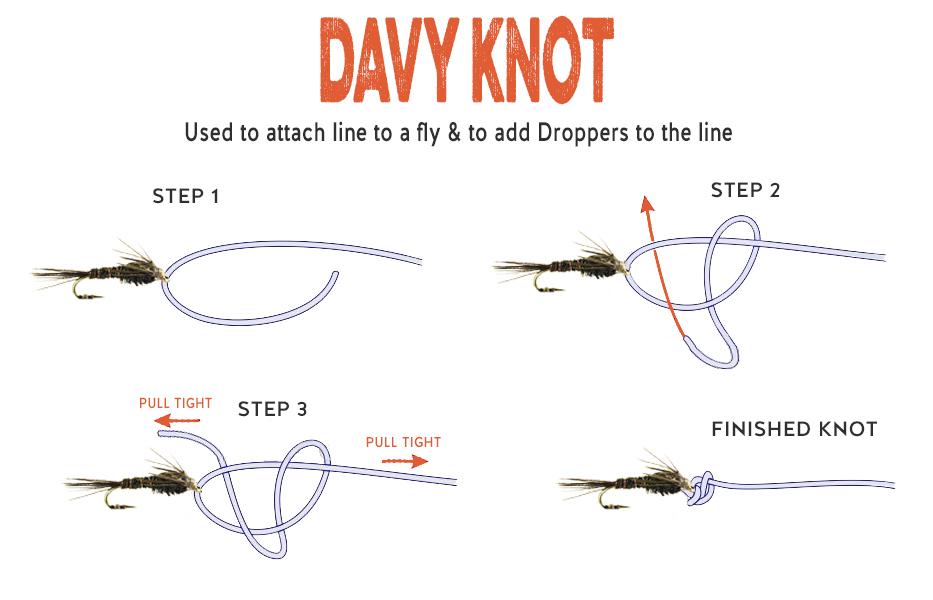
How to Tie the Davy Knot
Tying the Davy Knot is a straightforward process that anglers of all levels can quickly master. Follow these simple steps to secure your line with this reliable knot:
Step 1: Thread 3 to 4 inches of leader or tippet through the eye of the hook, then create a loop by bringing the tag end up to the standing line.
Step 2: Create a loose Overhand Knot.
Step 3: Bring the tag end back through the loop and above the standing line, making sure to pass between the overhand knot and the eye of the hook.
www.HCAezine.com Spring 2024 • High Country Angler 37




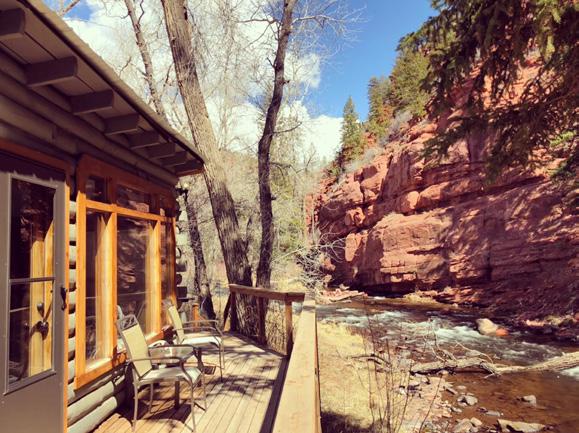
High Country Angler • Spring 2024 www.HCAezine.com 38 Book Today! 210.336.2613 thedallenbachranch.com thedallenbachranch@gmail.com ‣ Private Frying Pan access ‣ Minutes from downtown @shyanneorvis 2561 Frying Pan Road, Basalt ‣ Riverfront cabin rentals ‣ Weddings & special events
Step 4: Finishing the Knot: Moisten the knot with saliva before drawing it tight to prevent friction burns to the line. To tighten the knot, first pull on the tag end to draw up the knot, then on the standing line to set the knot. Trim off the excess line from the tag end.
If you are tired of counting twists and missing loops on Clinch and Orvis knots, the small but mighty Davy Knot is the knot you need! Its ease of tying, strength, and versatility make it a standout option for the fly fisher. As you embark on your next fishing adventure, consider incorporating the Davy Knot into your repertoire and experience the difference it can make in securing your flies and your catch.
About The Author

Peter Stitcher is an aquatic biologist by vocation and the owner of Ascent Fly Fishing located in Littleton CO and online at ascentflyfishing.com. Peter has written the “Bug Bites” column in High Country Angler for the last 7 years. Whether you are new to fly fishing or are a seasoned angler, Peter and the team at Ascent Fly Fishing would love to be a resource in equipping you, your family, and friends to help you get out on the water and experience it in a way that is life giving for you!


• Walking distance to the gold-medal waters of the Gunnison River
• Near Blue Mesa Reservoir
• Vintage charm and ambiance
• Great outdoor space
• Multiple room layouts
• Fully stocked kitchens

• Spacious boat parking, including free long-term for multiple stays
www.HCAezine.com Spring 2024 • High Country Angler 39
www.IslandAcresResort.com
Island Acres
US
Gunnison, CO 81230 970.641.1442
38339
Hwy 50
Get notified of each new issue. Sign up now.
Jiggy Twenty Incher
New becomes old and old becomes new.
The Twenty Incher pattern has been around for a long time. So have I, and I’ve fished it for decades. First was the original pattern without a bead, then a brass bead, then a tungsten bead. And now I have adapted it to a jig hook with a slotted tungsten bead.
Jig hooks are not new to fishing in the segments of saltwater and warm water, especially crappie jigs. (That was my first use of a jig hook when I accompanied my father-in-law to the mid-west). So, while not brand new to trout patterns, jig hooks are relatively recent, and hook manufacturers are adding new hooks and sizes to the jig arsenal. Availability of slotted
tungsten beads had a lot to do with that.
Besides just being something new and fun in the ever-changing fly tying universe, jig patterns have a sometimes advantage over regular patterns that are fished weighted and deep. With the significant weight of tungsten at the eye of the hook, the eye points down, causing the hook point to ride up, which isn’t weedless, but almost. You’ll snag bottom, rocks, and debris less often. And assuming the hook point indeed rides up (which may be our plan but not always), since flies tumble, the presentation lends itself to a favorable hooking angle.

Save 10% - Use Promo Code HCA1703 Offer Expires 6/30/24
Most any nymph pattern can be adapted to a jig hook—especially larger and longer shank hooks. The primary difference is inverting the hook in the vise with the shank down, and tying what was on top of the shank—for example a wing case or legs—to the bottom of the shank.
Fish it as you would a typical standard hook nymph, with or without a strike indicator, as well as tight line / euro-nymphing. I’m especially fond of fishing with two nymphs, with a non-weighted pattern first and the tungsten jig second. The tungsten will pull it all down, with the tungsten covering a deeper layer of the water column, and the non-weighted riding slightly higher in the water column.
High Country Angler • Spring 2024 www.HCAezine.com 40
FIT TO BE TIED • BY JOEL EVANS
HOOK: JIG, SIZE 6 OR 8
BEAD: COPPER 3.8 SLOTTED TUNGSTEN
THREAD : OLIVE 6/0
TAIL: BROWN GOOSE BIOT
ABDOMEN: PEACOCK
RIBBING: LARGE COPPER WIRE
WING: BROWN SWISS STRAW
LEGS: WHITE AND BLACK BARRED RUBBER LEGS
THORAX: SULPHUR SQUIRREL BLEND DUBBING
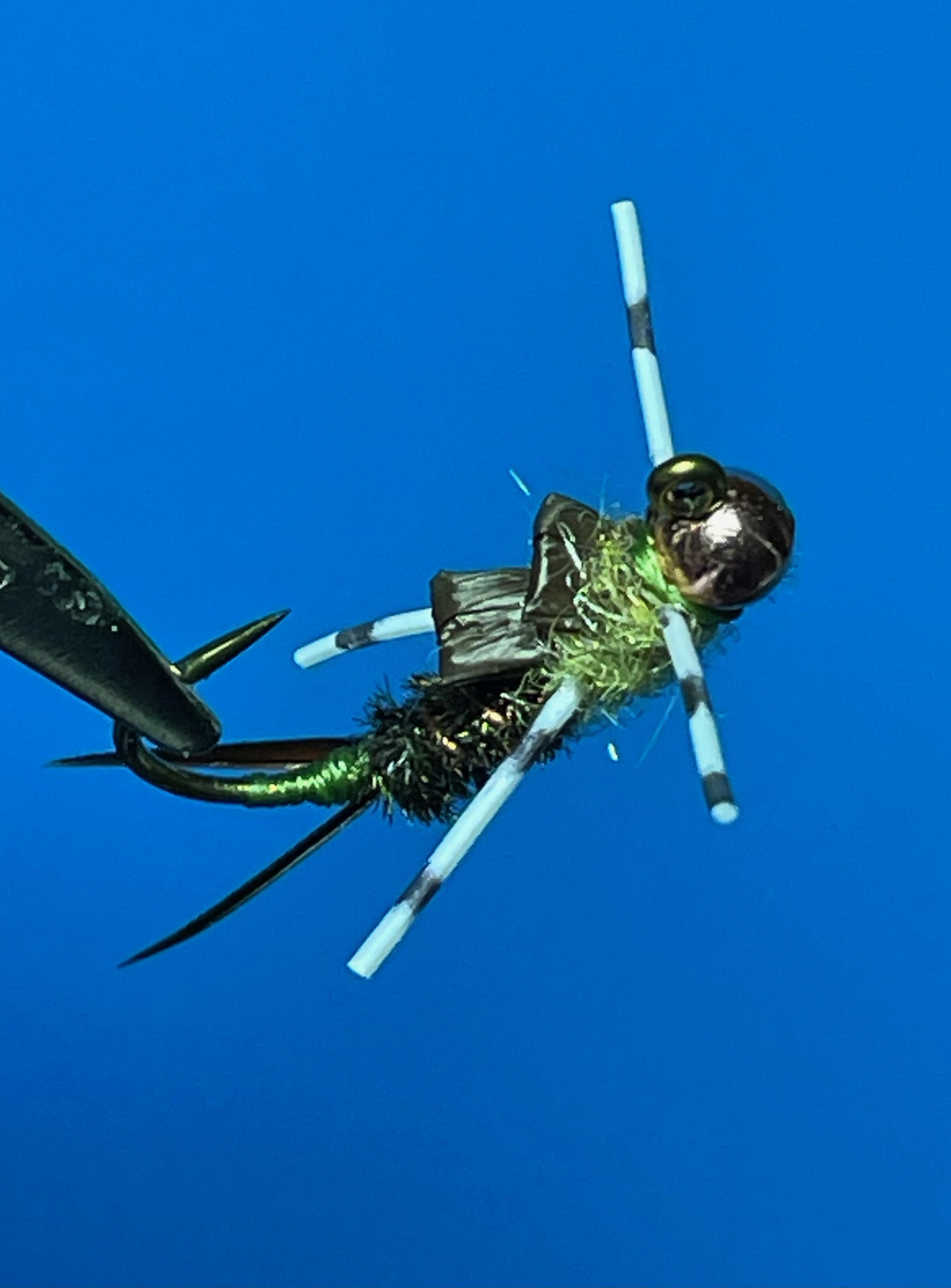
About The Author
Joel Evans is president of the Gunnison Gorge Anglers chapter and the current Southwest Regional Vice President of Colorado Trout Unlimited.
www.HCAezine.com Spring 2024 • High Country Angler 41
BY GREG HARDY
Oil and Water Shouldn’t Mix
Working outside in the high mountains in January is not much fun. As a matter of fact, it comes close to one of those television survival stories. But let’s envision that you are responding to an oil spill from a train derailment near the Moffat Tunnel in January. When the helicopter dropped you off that morning, the temperature was 35 below zero. The pilot keeps the power on the engines of the chopper, so his snow skids do not sink in the powder as you exit the door. You plunge nearly waist deep into snow as you step off the chopper’s skid. You are stuck in a drift beside a hovering helicopter. As the pilot applies power to fly back to the landing zone, your world turns completely white, like being inside a spatial disoriented snow globe.
Your first task is to put on a pair of snowshoes so you can survey the situation and get to work. Throughout the morning, workers are being dropped off at the derailment location to start the response activities. Oil spill response equipment is being slung to the site on a 50-foot cable attached to the belly of a Helio. The downdraft on the helicopter is more than 70 mph when the equipment is lowered to the response location.
You have unhooked these chopper loads many times in your career, and you know that the NOAA windchill charts do not calculate winds greater than 60 mph. So, this morning, the wind chill off the chopper’s blades is greater than 84 below zero. To further compound your misery, there is no shelter for you or your crew to get out of the cold. In addition, your problems are further exacerbated because the train was transporting waxy crude oil from the Unita Basin in Utah. This is not your normal crude oil. Waxy crude oil has different physical and chemical properties than normal crude oil. This will add another layer of complexity to your clean-up response.
Although this story is an example of a hypothetical
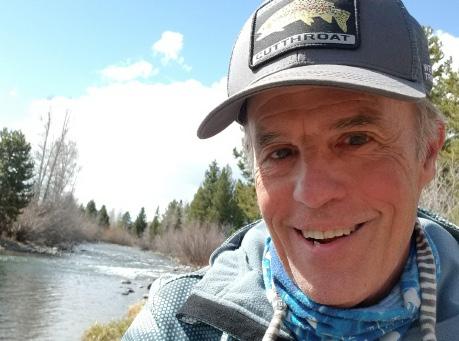
initial response to a train derailment, the first day of responding to a crude oil derailment along the Colorado River could look very much as the story was told. So, let’s look further into the many variables that make responding to a waxy crude oil spill extremely complex and complicated.
Waxy crude oil has a pour point of around 80-90 degree F, this means that below 80 degrees it is a solid. The crude is heated in order to load the railcars. The rail cars do not have internal heating devices so at some point during the train’s journey the product will change from liquid to solid. There is always offgassing of the liquid and solid phases, so the headspace of the train car is filled with vapors. Because waxy crude oil will burn at a temperature of less than 200 degrees F, it is classified by USDOT as a combustible solid. The low flash point means that there is always the possibility of a train derailment causing a catastrophic wildland fire.
Other spill response considerations include: the solid crude will normally float, but if mixed with debris, it will sink in the water column. Normal oil spill response equipment (i.e. oleophilic skimmers and pumps) will not work to recover the oil. Plus, it is very difficult to utilize deflection and containment booms in a fast-flowing river. Most of the crude will flow over the top or underneath the booms.
This causes the potential for an enormous amount of product to rapidly move downstream and further complicates the problems with potable municipalities drinking water inlet systems. The number of railcars that make up a train also increases the spill response challenge. Currently, there are 30,000 barrels (42 gallons of oil = 1 barrel) per day moving along the Colorado River. The trains enter the state on the Utah border and travel along the Colorado River through the Moffat Tunnel and down to Denver, and then to the refineries on the Gulf Coast. There is the potential
High Country Angler • Spring 2024 www.HCAezine.com 42
• CTU PRESIDENT
for the volume of waxy crude oil being transported through Colorado to rise to over 200,000 barrels per day within the next 5 years.
In summary, the transportation of crude oil by rail cars is a high-risk activity. The Colorado State Legislature is working on passing a Rail Safety Bill that would decrease the risk of transporting crude oil and other hazardous materials within the State. The proposed bill is comprised of prevention measures and mitigation measures. Limiting the length of a train greatly decreases the physical/mechanical forces on the train and makes operation safer. The installation of track-side monitoring devices will provide a train engineer with real-time safety feedback systems. The Bill also contains mitigation measures that would prevent the escalation of a derailment from becoming more serious. These items include enhanced notification systems to all communities and responders, and training on emergency response plans.
CTU is working at the State Capitol to secure passage of the Rail Safety Bill, so that we decrease the risk
of a catastrophe occurring, and improve the response mechanisms if it does. Your participation as a CTU member or supporter helps us continue to speak out for Colorado’s trout and rivers – including the Colorado and Fraser Rivers and South Boulder Creek, all of which lie along the route that Uinta waxy crude travels. Thanks for helping us continue these efforts to protect fisheries.
About The Author
Greg Hardy is CTU’s President. He retired after working 35 years with multinational oil/gas corporation where his responsibilities included Risk Management, Transportation of Hazardous Materials, and Oil Spill Response.

www.HCAezine.com Spring 2024 • High Country Angler 43
RESTORING THE KAWUNEECHE
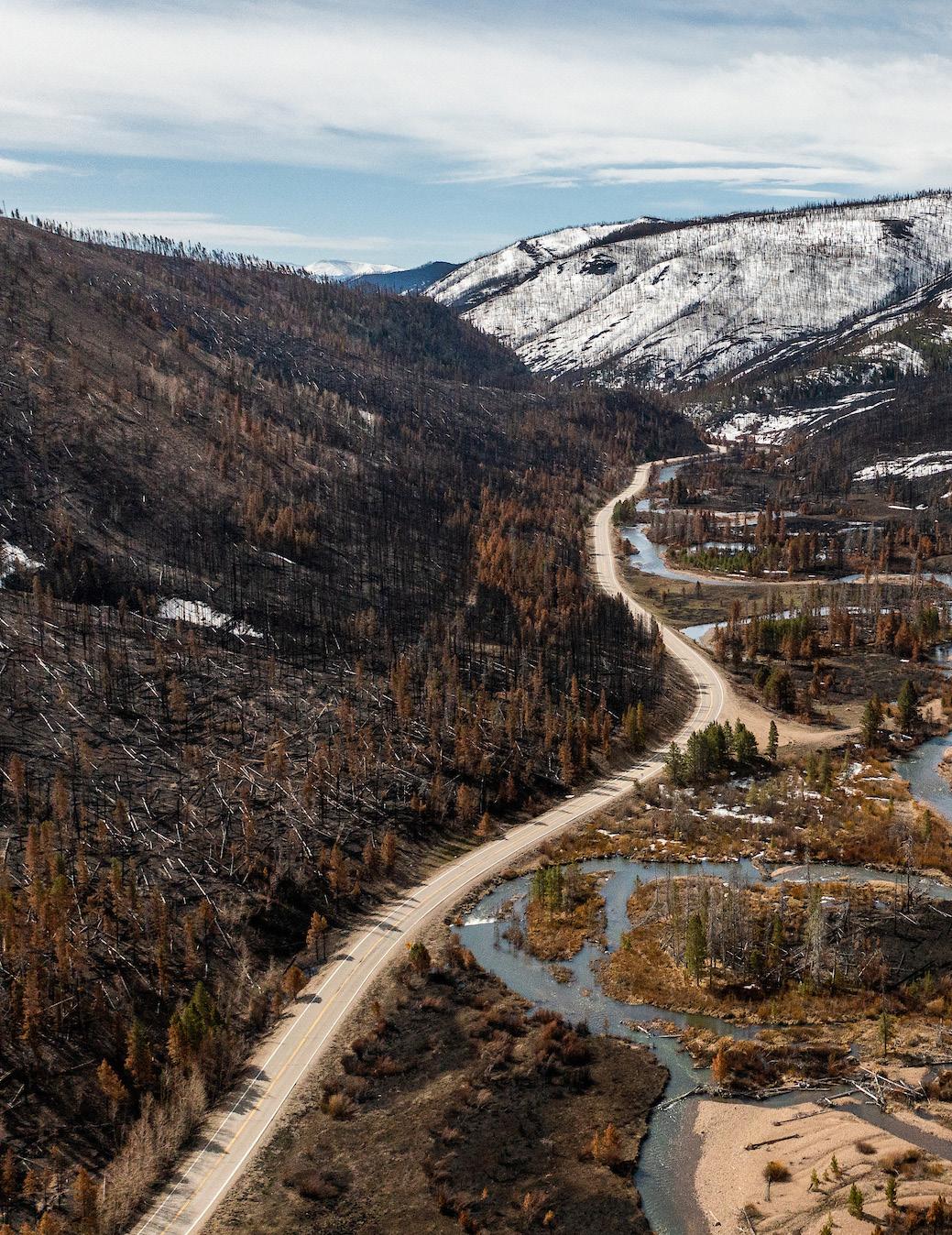
KAWUNEECHE VALLEY
 BY CELIA SHENEMAN
BY CELIA SHENEMAN
TROUT UNLIMITED JOINS COLLABORATIVE EFFORT IN ROCKY MOUNTAIN NATIONAL PARK
If you have ever driven over Trail Ridge Road through Rocky Mountain National Park, then you have probably enjoyed the serenity and scenery of the beloved Kawuneeche Valley, which lies just inside the Grand Lake entrance to the Park. The headwaters of the Colorado River flow through this landmark valley at the start of its epic journey to Mexico. The Valley is a vital part of the Upper Colorado River watershed, playing significant roles in flood mitigation, drought mitigation, and wildlife habitat. Once a lush, percolating riparian wetlands teeming with birds, bugs, trout, and beaver split by a meandering stream that frequently flooded the meadow, the Valley has now lost more than 75% of its tall willows and with that the beavers that sustained its wetlands. What was once a wet beaver-willow ecosystem is now largely an elk-moose grassland.
In 2020 Rocky Mountain National Park, the Arapaho-Roosevelt National Forests, Northern Water, the Colorado River District, Grand County, and the Town of Grand Lake formed an inclusive collaboration to study and rejuvenate this picturesque and critical gateway. The Kawuneeche Valley Restoration Collaboration (KVRC) goal is to achieve long-term benefits of a healthy environment including improved water quality, wildlife habitat, and aesthetic and recreational value. Now TU has joined this group effort to work to return the Kawuneeche Valley to its status as a vibrant and diverse ecosystem.
KVRC has engaged Colorado State University to perform an assessment of the watershed and to make recommendations for potential pilot restoration sites. Four potential sites with high chances of success and
cost-effective ecosystem restoration have been identified. These initial sites are within Rocky Mountain National Park and include Beaver, Baker, Bowen, and Onahu Creeks. Going forward, KVRC is striving to implement a variety of restoration projects on public lands in the Valley and surrounding private lands that could include strategies such as planting willows/riparian vegetation, installation of beaver dam analogs, restoration of abandoned ditches, levees and dams, and temporary fencing to allow recovery of vegetation. CTU joined this group with plans to participate in field projects that align with TU's mission and bringing resource support and volunteers for execution of field projects. Additional participants include Rocky Mountain National Park, US Forest Service, the Colorado River District, Grand County, Town of Grand Lake and the Colorado Water Conservation Board.
As assessment results are evaluated and the new pilot projects are implemented, look for more news on TU’s involvement and engagement as well as opportunities for TU members to participate in the KVRC to renew the riparian home of the headwaters of the Colorado River!
About The Author
Celia Sheneman is a Director at Large for Colorado Trout Unlimited and represents CTU with the KVRC.
High Country Angler • Spring 2024 www.HCAezine.com 46
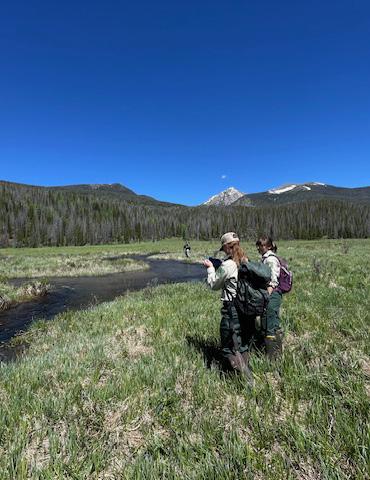

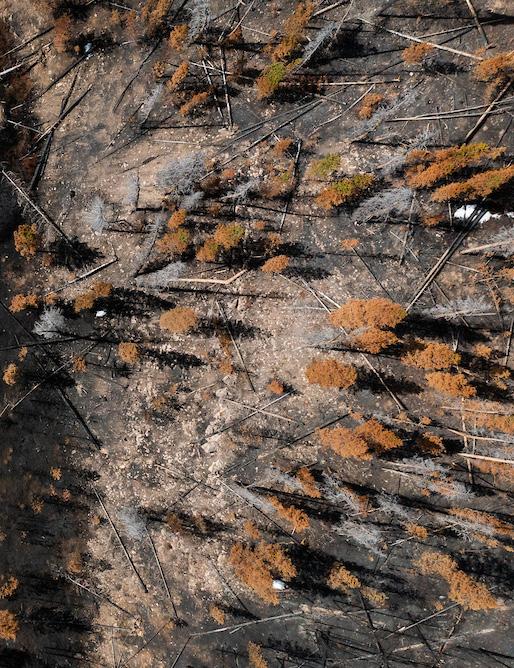
QAre all waters considered to be “waters of the United States” as defined by the Clean Water Act? Are all waters actually interconnected? What have our courts ruled with respect to these issues including in the case of Sackett v. EPA?
AThe Supreme Court of the United States took up the question of what waters were covered under the Clean Water Act, and thus where permits were – or were not - required, in the case of Sackett v. EPA. Unfortunately, the Court’s decision was based primarily on jurisdictional considerations as a legal issue, rather than on scientific matters related to water and the movements of water.
The Court majority in the Sackett v. EPA case determined that Waters of the United States protected under the Clean Water Act were far more limited than had been historically the case for the Act’s 50 successful years. They proposed a standard under which waters and wetlands were only protected if they were relatively permanent and in the case of wetlands had a continuous surface connection to those permanent waterways.
I am not a legal scholar, so I will not attempt to discuss the legal issues of this case. I will say
only that as a scientist I think that EPA should have the authority to act in the best interests of the People of the United States. Speaking as an environmental scientist, I will add that it is in the best interests of the American people to not fill wetlands, even if the wetlands are not connected directly to a lake or stream. Water does not need a direct surface connection to move and transport dissolved and suspended materials to bodies of water specifically identified in the Clean Water Act.
The Sacketts and their legal team argued that there were several hundred feet of dry land between the shallow wetland that had been filled and the nearest stream; therefore, their actions could not have affected water protected by provisions of the Clean Water Act. Although a casual consideration of this argument might appear to be valid, it does not consider the basic character and mobility of water.
Water moves downhill. Typically, we think of this basic fact in terms of flowing surface waters. Small brooks flow down to become streams, that flow down to become rivers or lakes, which eventually send their waters to the oceans. Water being the universal solvent takes tons of dissolved and suspended material with it. The most basic consideration of the Clean Water Act is the fact that the flowing waters carry an array of suspended and/or dissolved pollutants with them, thereby causing untold levels of environmental and health-
High Country Angler • Spring 2024 www.HCAezine.com 50
THE LAST CAST • JOHN G. NICKUM
Waters of the U.S.
related problems to the downstream areas. The Sacketts and their legal team argued that this could not happen in their case because of the dry land between their wetland and the nearest stream. That argument ignores basic facts about wetlands, aquifers, and soils.
A direct surface connection is not required for pollutants to move from a wetland to a pond, stream, or lake in the same area. The waters in many aquifers are mobile, moving slowly through the subsurface soils and gravels to soils and gravels at slightly lower elevations, eventually emerging into surface waters. Severe weather events may also bring pollutants held in soils and aquifers into the lakes and streams of their area. A study with which I was involved in Iowa found that toxic chemicals that had not been used on surface areas for 20 years continued to appear in the rivers of the area after especially heavy rain events.
It is reasonable to state that water, more than any other substance, distinguishes the
About The Author
Planet Earth from other planets and the array of objects moving about our part of the universe. Water makes Earth the “Blue Planet” when viewed from space. Water and oxygen are the basic foundations of life as we experience it. It seems logical for humans acting together through their elected representatives to establish rules for the use and protection of water wherever it is found and in whatever form it is found. When such rules are formulated, they must recognize the mobile nature of water. Water always moves downhill, including the unseen movements below wetlands and in aquifers, as well as the visible movements in streams and rivers.
Laws governing the uses and protection of waters should be based on evidence-backed scientific realities. In evaluating legal jurisdiction in the Sackett case, the Supreme Court ignored those realities to draw legal boundaries that don’t reflect how natural processes actually work.
John Nickum, is a retired PhD. fishery biologist whose career has included positions as professor at research universities including Iowa State and Cornell University, director of the Fish and Wildlife Service’s fisheries research facility in Bozeman, MT, and science officer for the Fish and Wildlife Service’s Mountain-Prairie Region. He was inducted into the National Fish Culture Hall of Fame in 2008.
www.HCAezine.com Spring 2024 • High Country Angler 51












































 PHOTOS
PHOTOS
 by Brian La Rue
by Brian La Rue



















 by Jackson Temme
by Jackson Temme


































 BY CELIA SHENEMAN
BY CELIA SHENEMAN






